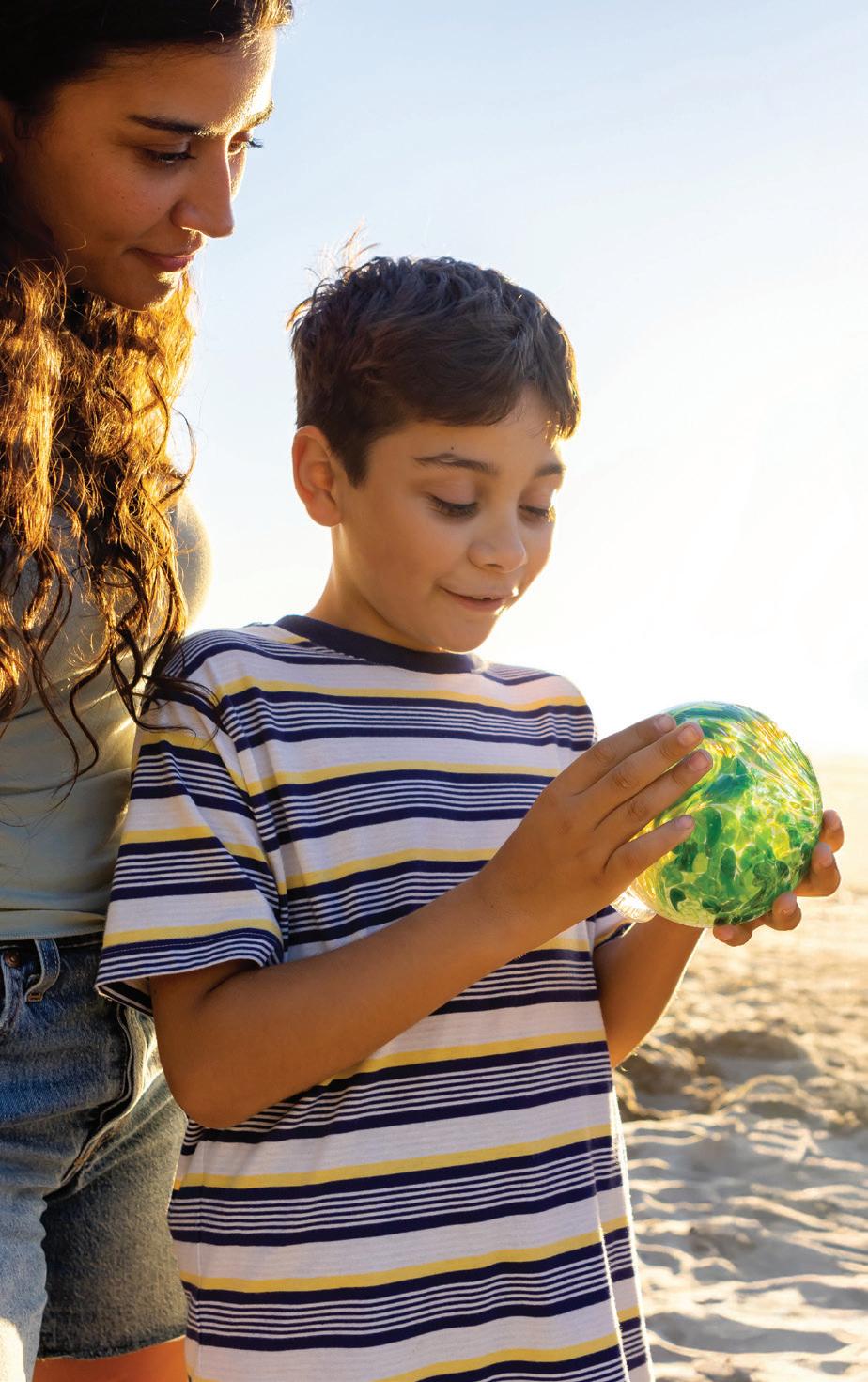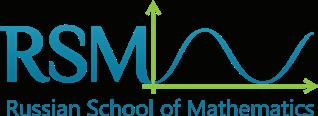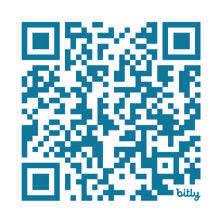
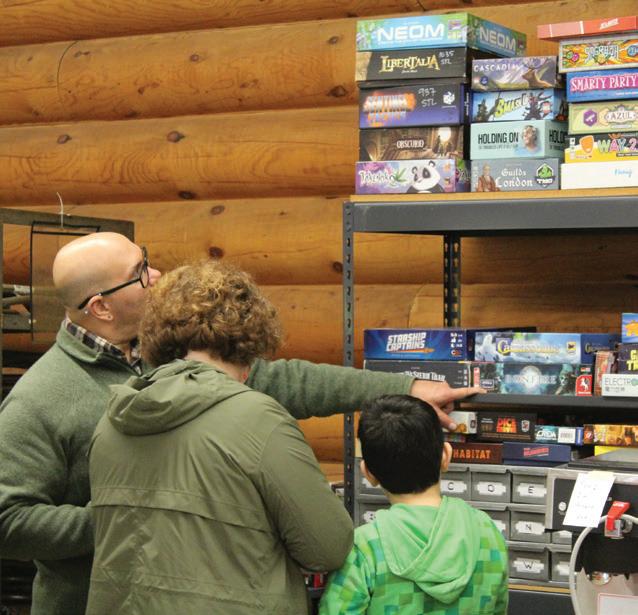
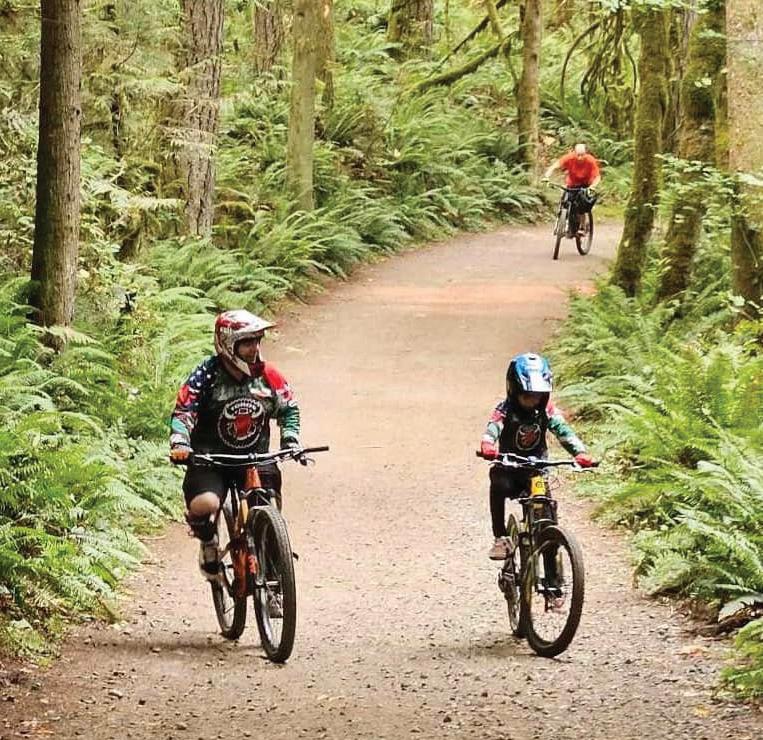
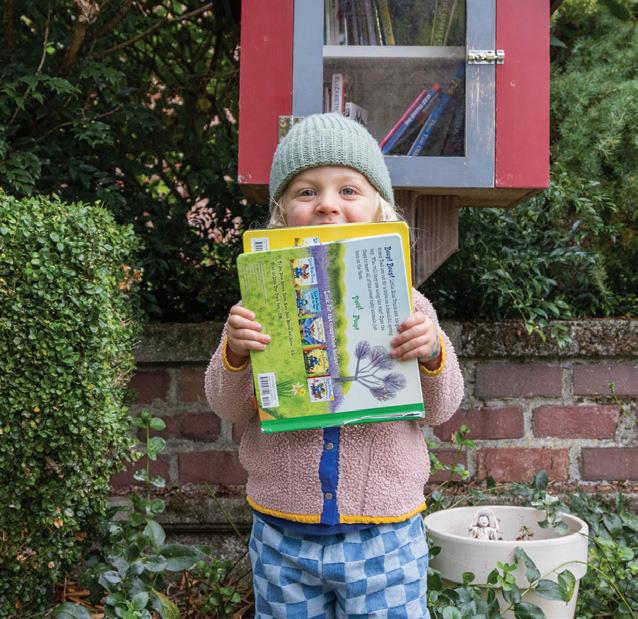
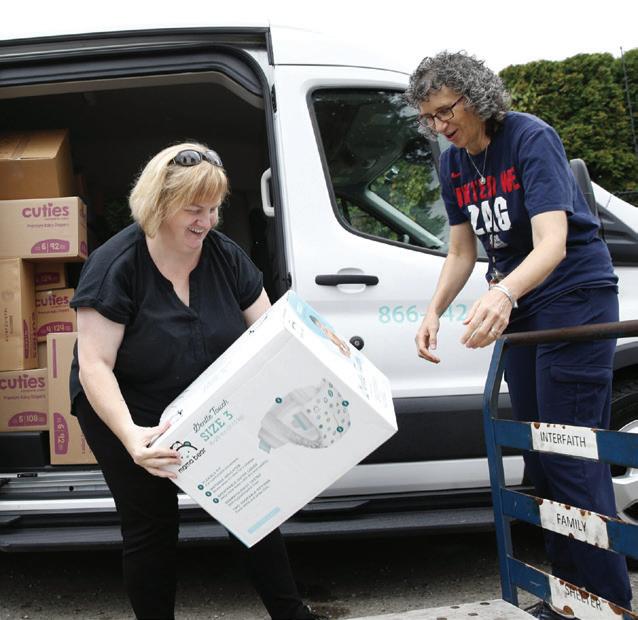
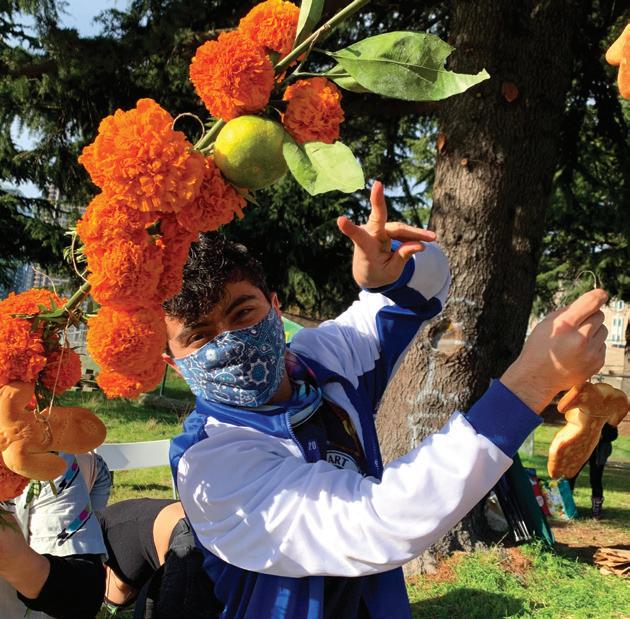
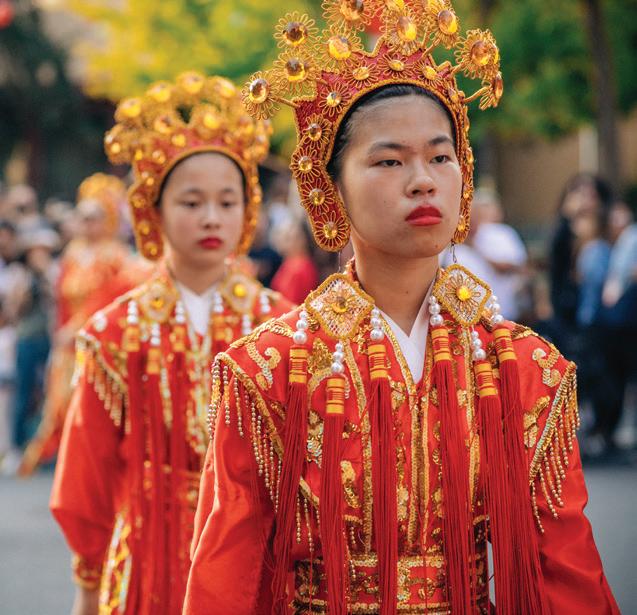








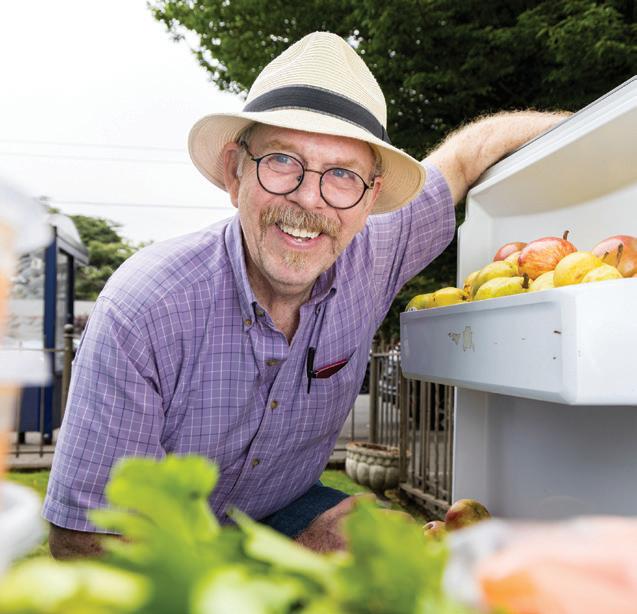

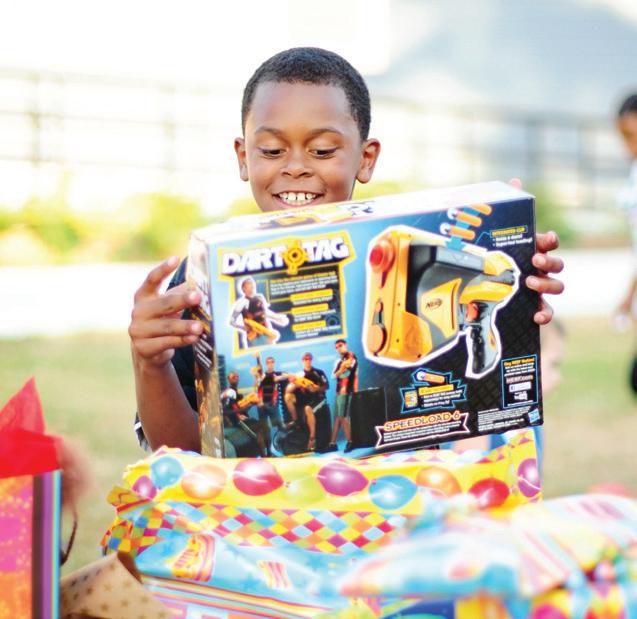

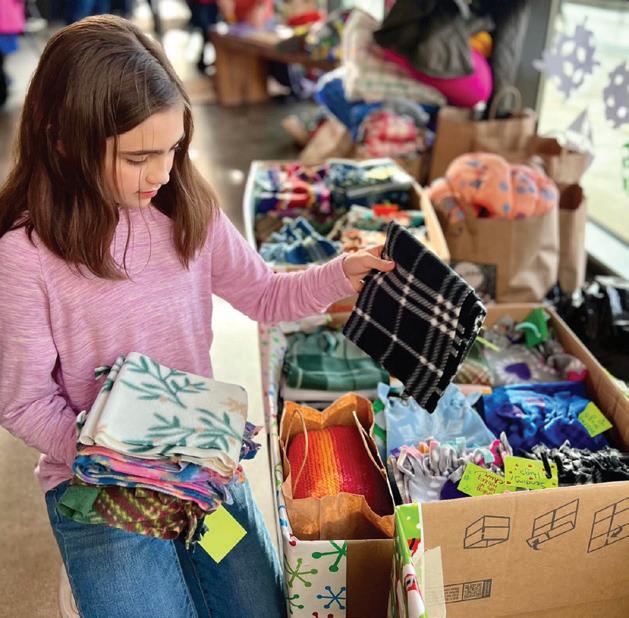
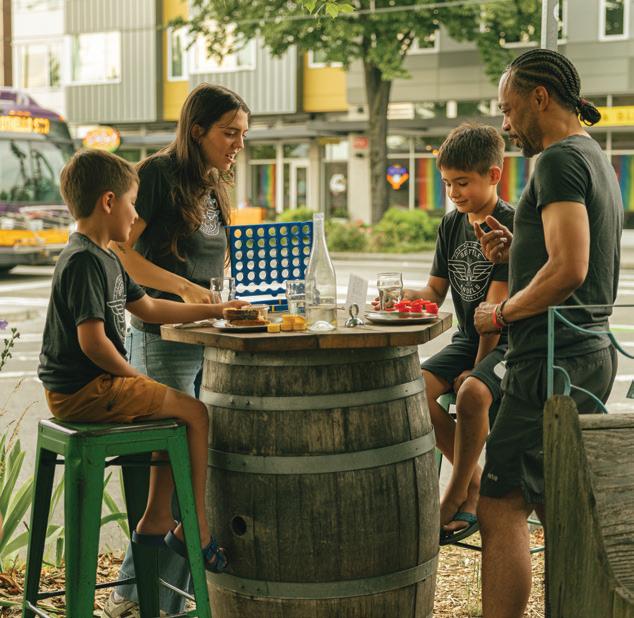
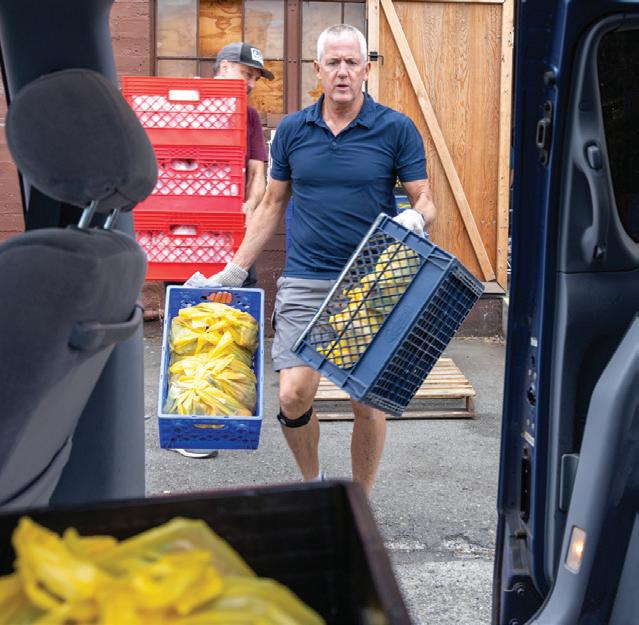
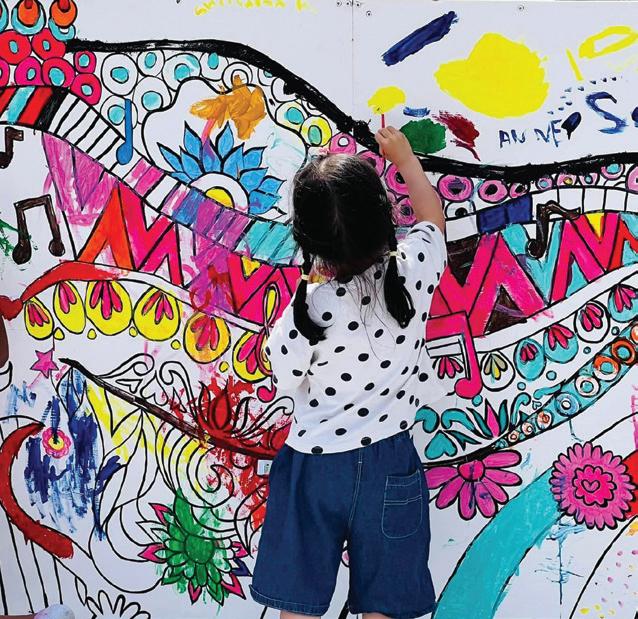

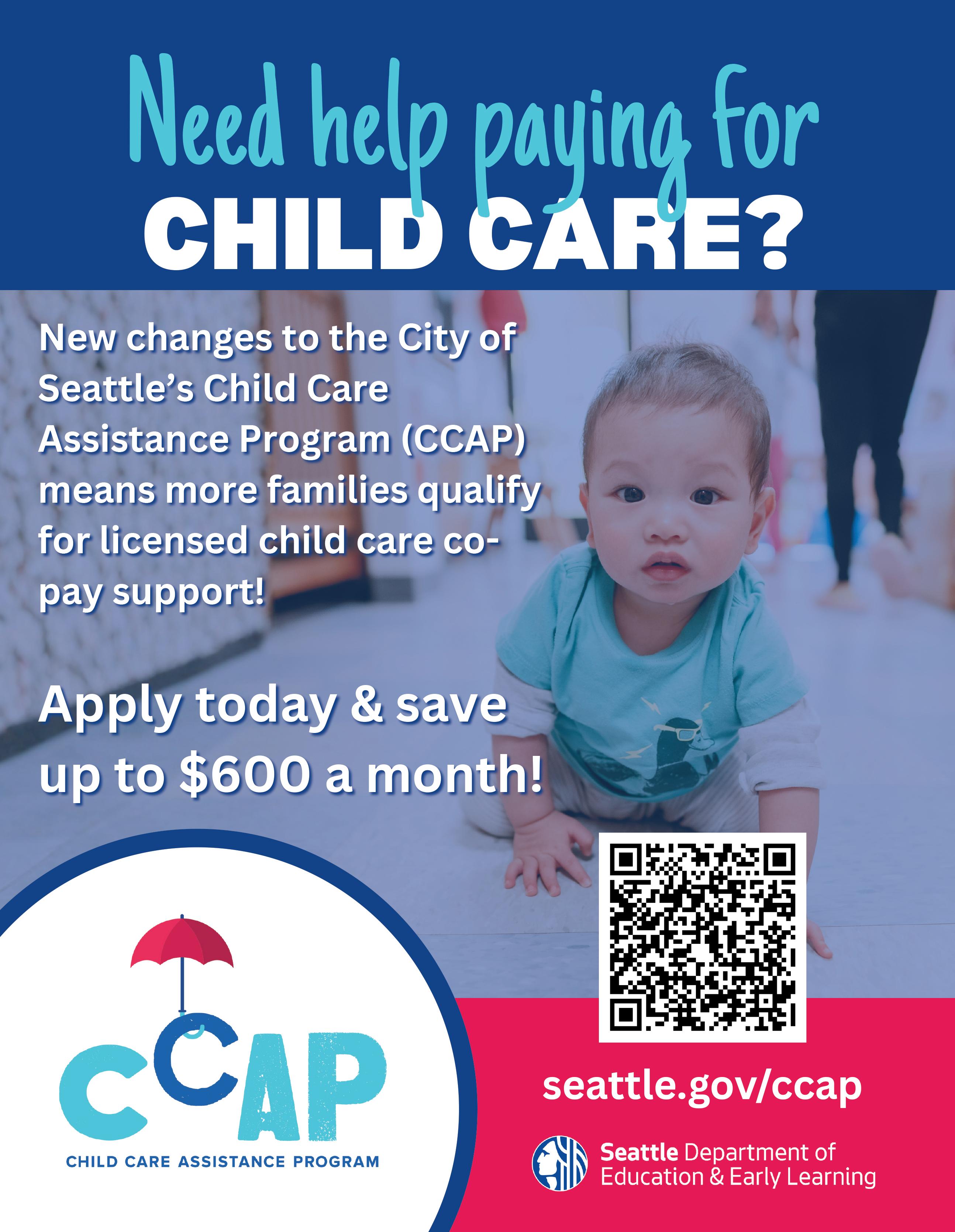

November/December 2025 // Issue 514
WHAT PARENTS ARE TALKING ABOUT 5
DAD NEXT DOOR 7 ROMP 9
FEATURE: MAKERS OF COMMUNITY 20-31
RAINIER VALLEY FOOD BANK THE LITTLE FREE MOVEMENT SUPER FAMILIAS
SEATTLE ANGELS
SEATTLE’S TOOL LIBRARIES & ABRACADABRA TOY LIBRARIES WESTSIDE BABY & BABIES OF HOMELESSNESS
SEATTLE CHINESE COMMUNITY GIRLS’ DRILL TEAM
SEATTLE BACKPACK BRIGADE
TOROS CYCLING CLUB
SEATTLE COMMUNITY FRIDGE
VOLUNTEER PARK STARGAZING COMMUNITY
PASTEL SOULS
DROP BLOCKS & GREEN LAKE LITTER PATROL
BIRTHDAY DREAMS THOUGHTFUL CITIZENS CITY FRUIT
ANN BERGMAN Publisher, Founder abergman@seattleschild.com
JASMIN THANKACHEN Associate Publisher jasmin@seattleschild.com
KATHRYN HOLLOWAY Art Director
CHERYL MURFIN Managing Editor, Print cheryl@seattleschild.com
BRITT THORSON Managing Editor, Digital britt@seattleschild.com
JOSHUA HUSTON Photographer
ROSE WILLIAMSON Proofreader
DR. SUSANNA BLOCK
IAN COON NILS DAHLGREN BRETT HAMIL ELIZABETH HUNTER
JEFF LEE, MD Columnist Contributors
LIZ HUIZAR MELODY IP CHERYL MURFIN ALLISON PETERSON DAVID TURNER
ADVERTISING
NOAH DRETSKE Account Executive noah@seattleschild.com
YULIA FIALA Account Executive yulia@seattleschild.com
AMBER ELBON
Ad Production Manager amber@seattleschild.com

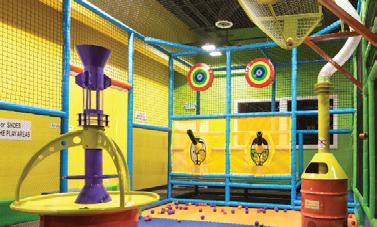
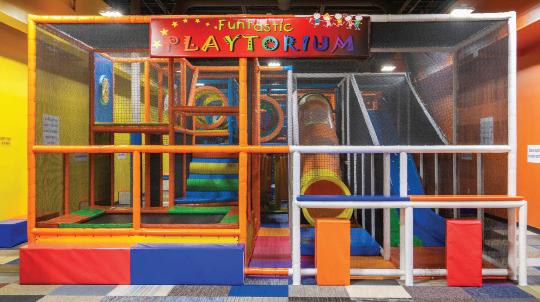

„ Find us online at seattleschild.com


Everyone deserves to have what they need this winter.

Scan QR code to give today https://bit.ly/ 47zHOpU SUPPORTED BY


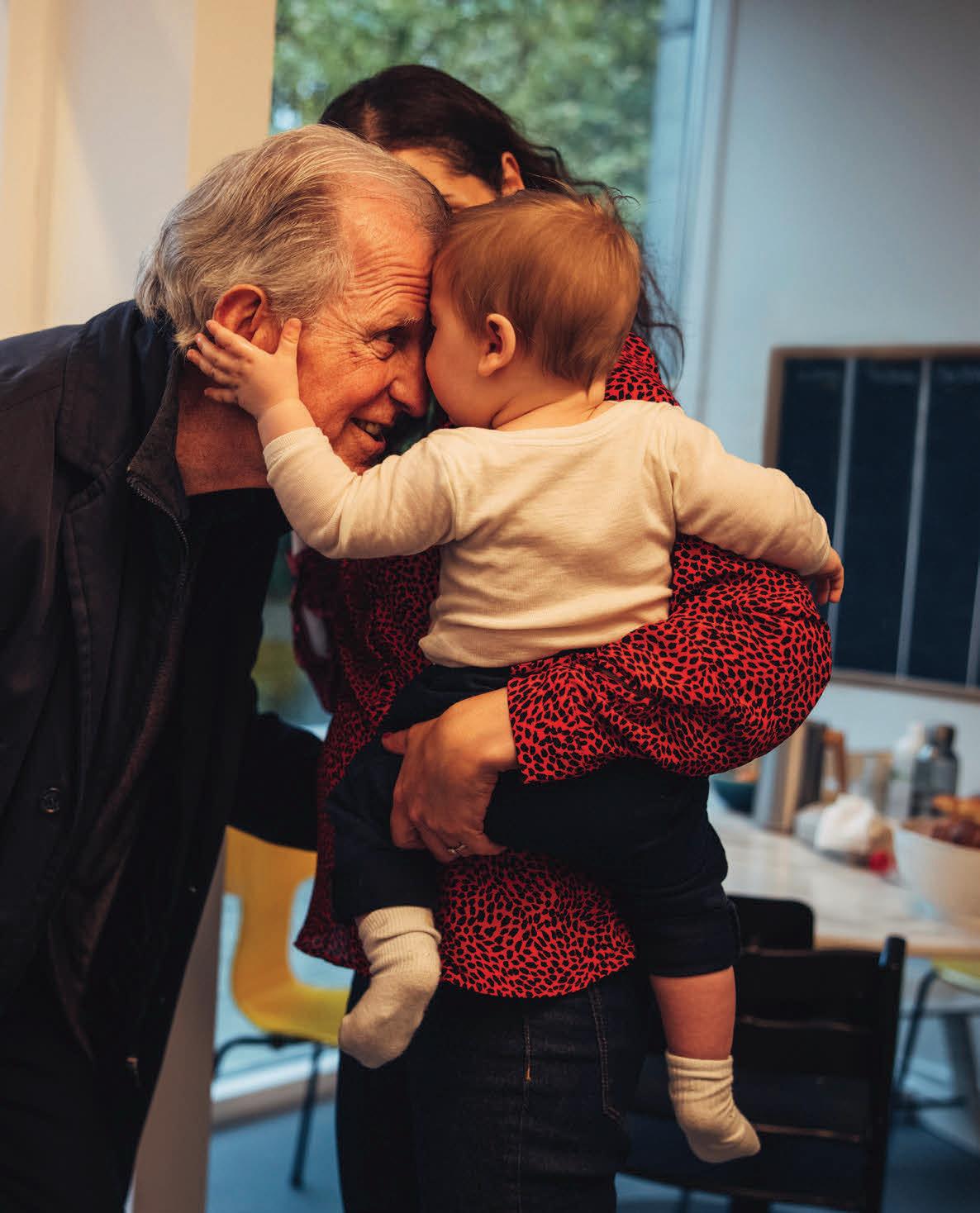

Don’t

Parent voices heard at Seattle Education Forum by LIZ HUIZAR, SESEC and IAN COON, ALLIANCE FOR EDUCATION
Earlier this fall, the Seattle Education Forum offered something rarely seen in traditional candidate events: a space where students and families, those most affected by education policy but often furthest from political power, could speak directly with the people who seek to represent them — school board and other candidates on the Nov. 4 ballot. At that October event, parents
and other concerned citizens sat together at tables, ate dinner, and had open dialogue with the candidates. This was not your usual meet-the-candidates event: the candidates moved beyond rehearsed talking points and genuinely engaged with community voices.
For years, families and students have raised the alarm: our public schools are not serving all students equitably. This
forum was designed to elevate everyday experiences into policy-relevant discussions, surfacing critiques, sparking ideas, and issuing calls for accountability and support.
What emerged was powerful. Candidates heard firsthand about the challenges facing students not just inside school walls, but throughout their communities. While the issues raised were wide-ranging, they underscored one central truth: education sits at the intersection of many systems, and meaningful change requires
collaboration that crosses regional and institutional boundaries.
Concerns around housing
Much of the forum discussion centered on student enrollment and the growing affordability crisis. As Seattle’s wealth gap widens, many families simply can’t afford to stay in the city. This is driving school enrollment declines, especially in neighborhoods hit hardest by displacement.
One School Board candidate



pointed to recent district data showing that for every single-family home in Seattle, about 0.3 school-age children live there. In standard multifamily units, that number drops to 0.1. But in affordable, family-sized multifamily units, the number jumps to 0.8 children per unit. The takeaway is clear: enrollment isn’t declining because families don’t want to be here. It’s because they can’t afford to be.
Reversing this trend requires deeper collaboration between the School Board, City Council, and housing advocates. If we want vibrant schools, we need housing policies that allow families to stay. Quite literally: if you build it, they will come. Concerns around safety
Families and students described safety as more than reacting to violence. Safety in the schools means creating spaces where students feel physically and emotionally secure.
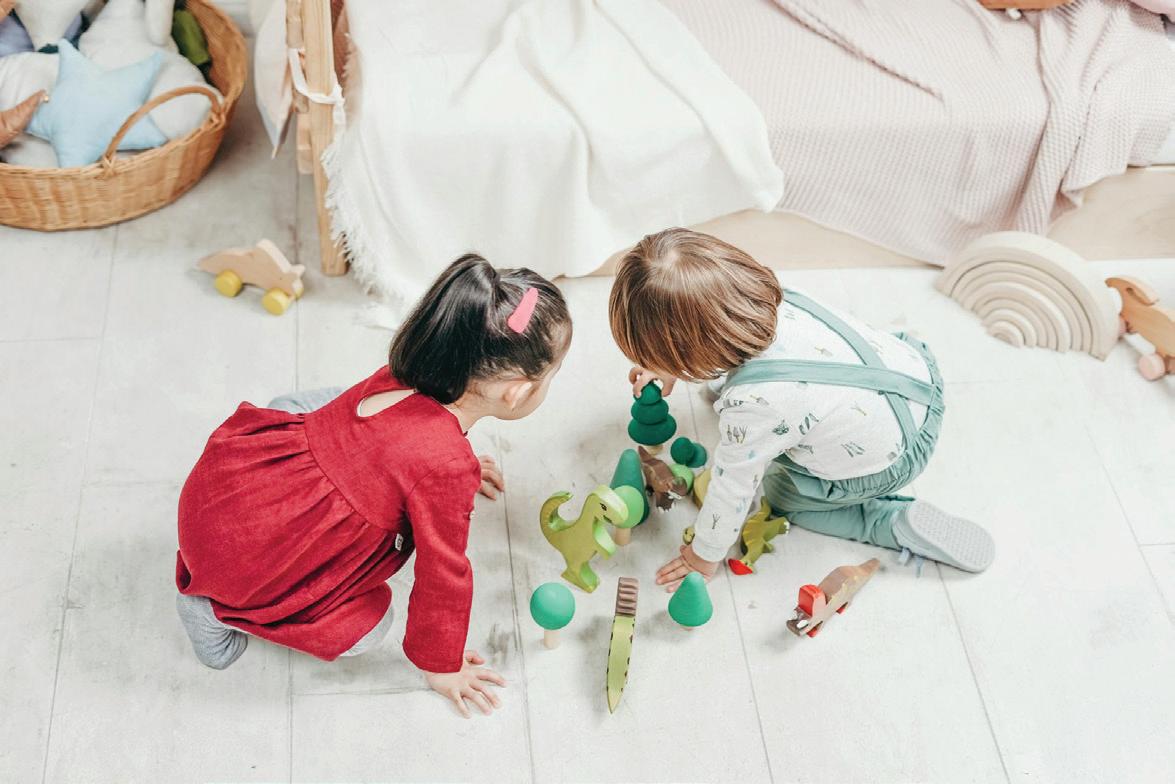
The School Board’s decision to exclude school resource officers from Seattle schools sparked discussion. Participants noted progress from non-policing strategies, such as added district safety staff and community violence prevention. Parents and students emphasized that safety must also consider the harm policing has caused in many communities. For students of color, true safety includes psychological well-being.
Concerns expressed extended to federal immigration enforcement. Though schools are legally protected, many families fear protections will be ignored here, as we see across the nation. Community members called for stronger policies to prevent cooperation with federal immigration agencies and ensure school leaders are ready to respond as
proactively as possible, equipped with the resources to do so.
Families stressed the need for more school-based mental health services, including culturally responsive counselors. Real safety means emotional support, trauma-informed care, and healing environments rather than punishment.
These discussions made clear that safety must be holistic — prioritizing care, trust, and lasting well-being — going beyond the current conversation of reactive policies and narrow definitions of safety. Concerns around funding
One of the clearest takeaways, for both us as organizers and the candidates in the room, was the urgent need for stronger collaboration across government offices. An example: the City of Seattle’s 2025 state legislative agenda included increased school funding capacity. While the intention was right, the effort was pursued in isolation, without meaningful coordination with school leaders or advocates. As a result, it fell short.
That begs an important question: could greater collaboration have led to better outcomes?
Across the board, there is broad agreement on the “what” and the “why” of supporting our schools. We fall short in the “how.” Moving forward, we must demand our leaders not only commit to education equity in words but also work together across agencies and jurisdictions to deliver on that promise.
The Seattle Education Forum showed busy parents will voice their concerns and with collective determination and bold action, we can build the schools our students deserve.
Liz Huizar is executive director of Southeast Seattle Education Coalition. Ian Coon is communications director for Alliance for Education.
by JEFF LEE, MD
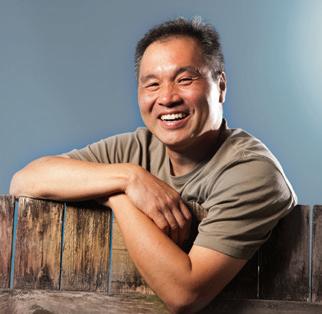
My brother Todd was born in August 1957 — a cherished and much-anticipated first Chinese son. Two and a half years later, I crashed the party. That must have been a rude awakening. Although studies on birth order and personality have yielded mixed results, I’m convinced that the timing of my arrival had a lot to do with who I turned out to be. The age difference between us gave Todd a clear head start at almost everything — but not enough to completely count me out. It was the perfect incubator for my competitive overdrive.
My mom once said that I was like Avis Car Rental: number two, and always trying harder. I brought that attitude to everything we did: basketball, card games, tennis, academics. The actual arena didn’t matter. My only concern was proving I could keep up with Todd.
Over time, I did more than keep up. Sometimes I passed him, which I never let him forget. I was so obnoxious, in fact, that by the time he was a senior in high school, he promised on a regular basis that his last act before leaving for college would be to beat me to a pulp. I wasn’t worried, though. I knew I could outrun him.
When Todd did go off to college, I can’t say that I missed him. After sharing a room for the first fifteen years of my life, I was thrilled to have my own space. During high school, we had moved down to the basement apartment that we’d previously rented out, so now I had a bachelor pad all to myself.
Back in those days, stereo systems were too bulky and too expensive to fit in most dorm rooms, so my brother left his entire record collection behind. And although I’d heard most of it before, now I could play whatever I liked, whenever I wanted. It was a revelation. In those stacks and stacks of LPs, there were archaeological layers of Todd’s evolving musical taste. The earliest strata, Beatles and saccharine 60’s pop, quickly gave way to more sophisticated sounds. There were singer-songwriters like Joni Mitchell and James Taylor. There was a strong vein of R&B, with Aretha, Marvin Gaye, Al Green, and Earth, Wind and Fire. There were pioneer indie artists like Tom Waits, Rickie Lee Jones, Al Jar-
reau and Gil Scott-Heron. And then there was jazz — Keith Jarrett, Sarah Vaughn, Ella, Billie, Coltrane and Miles.
I don’t know how I would have found any of that on my own, but there it was just waiting for me: an eclectic, curated, comprehensive musical education at my fingertips. I wouldn’t start making music of my own until years later, but when I did, I had an incredible foundation to build on. I owe so much of my creative expression, not to mention a huge community of dear musical friends, to my brother. He never did give me the beating he promised, but instead left me one of the most precious gifts I’ve ever received.
“He never did give me the beating he promised, but instead left me one of the most precious gifts I’ve ever received.”
As adults, Todd and I ended up on separate coasts, and though our boyhood competition quickly faded, we never became close. He was always a bit of a loner, and it wasn’t until a few years ago that we discovered he’d been struggling with symptoms that turned out to be Lewy body dementia. We rallied around him, and brought him out to Denver in the middle of the pandemic, where he could be closer to one of my other brothers. At first, he made a remarkable recovery, but over time his disease took its inevitable toll. A few months ago he died.
Last week, our family gathered together to remember him. We stood in a circle on a beach, sharing stories and memories, then scattered his ashes in the waves. It was then I realized that, even though we were never close, his impact on my life had been as profound as that of anyone I’ve ever known.
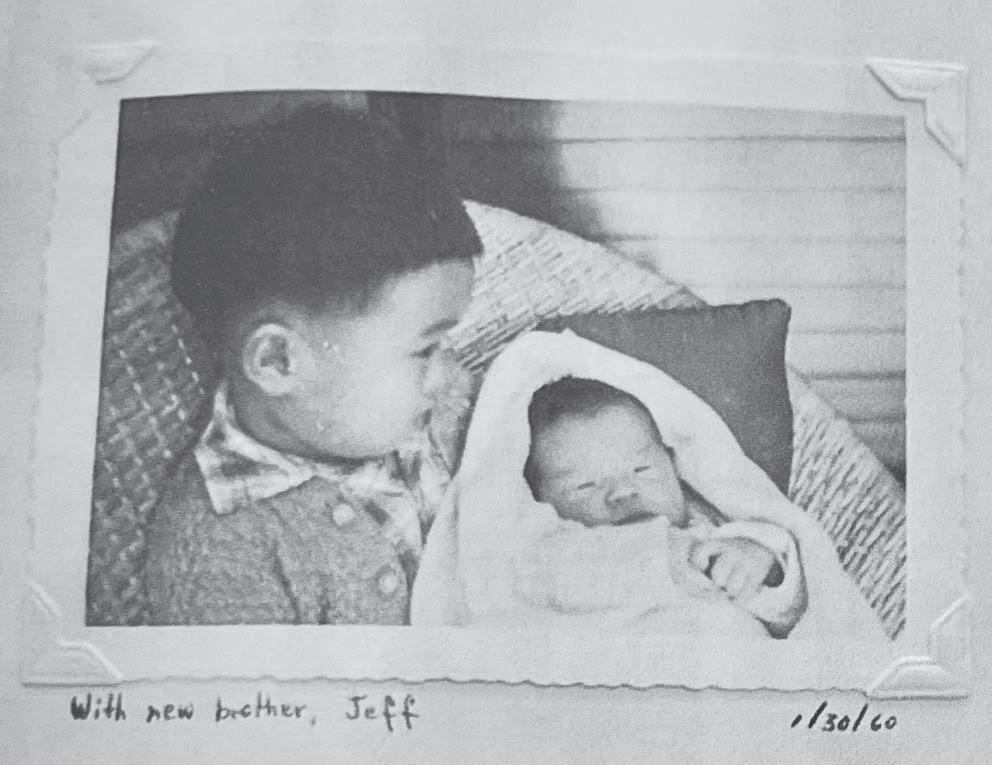
We’re quick to acknowledge the effects of parents on children, but I think we underestimate the role siblings play. That gradual accumulation of shared experiences — the countless family dinners, pointless squabbles, hand-me-down clothing, and stupid TV shows — build up into a particular kind of intimacy that can’t be duplicated any other way.
There’s a faded photo in Todd’s baby book, from before my parents got too distracted and exhausted to bother taking pictures of their kids. In it, I’m two weeks old, and Todd is holding me in his arms and looking at my face. Little did he know how many ways I would make him regret that I’d ever been born. Little did I know how many ways he’d make me the person I am today.
ABOUT OUR COLUMNIST
Jeff Lee sings Earth, Wind and Fire songs in falsetto when no one can hear him, in Seattle, WA.
by DR. SUSANNA BLOCK
It can be challenging to constantly remind our children about deadlines and upcoming events. We can give them a sense of control by teaching the value of time, how to break big projects down and create a time management system.
Helping kids develop time management habits is a gift that keeps giving.
Effective time management is useful to get things done in a timely manner, but it is also a key tool to control stress.
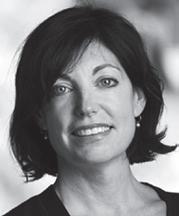
When everything “seems like fun” or there’s “fear of missing out,” it is easy to quickly become overcommitted. It can be frustrating when our children don’t have a clear ability to prioritize or respond to tasks in a timely fashion. The truth is, they just don’t have those skills yet, in large part because they are still developing. Don’t panic, but the frontal lobe (which is the part of the brain used for higher-level executive function) isn’t fully developed until a person is around 25 years old.
But we can help teach them a foundation of time-management skills now and set them up for positive decision-making around the use of their time. Take the long view on this one: They may not get it every time, but it is worth the effort.
Time as an essential resource
The term “resource” is often used to define physical things that can be drawn upon when needed — money, gold, oil, etc. But what about time? It may be a new idea for tweens and teens that their time is also a resource, and in fact, one of their most important finite resources.
Helping children be thoughtful about how they spend their time forms a foundation for making decisions about what to do and not to do. Thinking about using their time also helps children decide when to say “no” to something.
Time management tip: Break up big projects
Time-management skills are also helpful when it comes to daunting, huge projects. Whether it’s a presentation, an essay or preparing for a test, feeling overwhelmed by big projects makes it

so much harder to get started. Learning how to break up a big project into smaller bite-sized chunks is a skill for children and adults alike.
Tackling small pieces of a big project takes away the sense of panic and creates opportunities for success as the smaller pieces are accomplished. This works in middle school, high school, college and beyond.
Kids and time management: DIY system
You will get more buy-in if kids come up with their own system to organize and manage their time. The last thing we want to do as parents is to constantly nag them. It’s not fun and it doesn’t help them learn how to do it. Talk about different time-management systems — whether it is a calendar app, notes app or a paper planner. Have them give it a try.
It may take a few attempts to get the
right system, but building this habit can help for a lifetime. It is also helpful to work together with your kids weekly to plan out the broad brushstrokes for the week.
Time management can give teens and tweens more control over their time and remove some of the stress of deciding between two competing tasks or events. Eventually, building these skills will not only allow them to manage their own time but also to prioritize what they really want to be doing with that time, whether it’s time with friends, sports, creative pursuits, or play.
Dr. Susanna Block, MD, MPH, is a pediatrician with Kaiser Permanente in Seattle and lives with her family in Queen Anne.
SPONSORED BY


Holiday events, lights, shows, markets, runs and more
The months of November and December promise two things: a whole lot of holidays and a whole lot of holiday fun. No matter what, if anything, your family celebrates, this time of
The Polar Express™
All aboard the Polar Express for a 75-minute round-trip to the North Pole to see Santa Claus. Hear the story of the first gift of Christmas, have hot cocoa and cookies, and see the man in the red suit. Presented by The Chehalis Centralia Railroad. Weekends, Nov. 15-Dec. 21. $66 per person, kids 2 and under ride free on an adult’s lap.
Christmas Ship™ Festival
Decked out in hundreds of lights, each sailing of the Christmas Ship includes Cookies with Santa and a coloring surprise (2 p.m. sailings only) and a choir performance.
Prone to seasickness? Watch from local beaches and shorelines as the ships cruise by. Nov. 28-Dec. 23. Prices vary.
Snowflake Lane at The Bellevue Collection
Snowflakes fall to the ground as a parade of costumed characters and magical floats glide down the street, spreading holiday cheer.
Stake out your favorite viewing spot early in the season and show up well before showtime. Nightly at 7 p.m., Nov. 28-Dec. 24. FREE Seattle Winterfest
Kick off your holiday festivities with a trip to Seattle Center, where you’ll find a train village, a world bazaar, a European-inspired Christmas market, and a variety of entertainment. Don’t miss the ice
year offers ample opportunities to see, taste, and hear cultural traditions from around the world.
From the Mexican Día de los Muertos, Thanksgiving, and Native American Heritage Day in Novem-
ber to Christmas, Kwanzaa, Chanukah, Winter Solstice, and New Year’s Eve in December, take advantage of the diverse celebrations right in your backyard as you give the gift of cultural exploration to your kids.
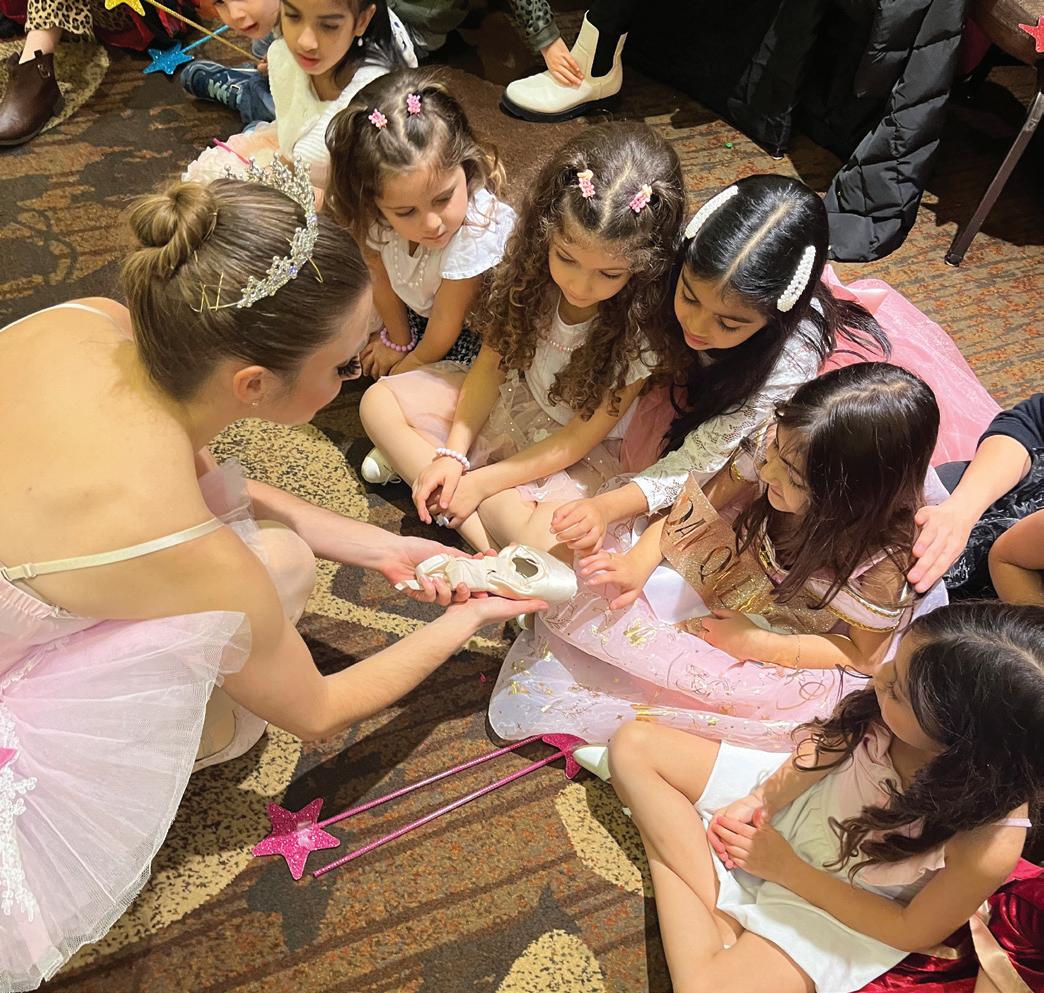
artists. Nov. 28-Dec. 31.
KidsQuest Children’s Museum
Your little ones are invited to enjoy Gingerbread Workshops, at the Hyatt Regency, Bellevue, Nov. 2829. Workshops feature hundreds of gingerbread houses, yummy candy buffets, and excerpts from the Nutcracker, performed by Flight Feathers Ballet. Stay to construct a gingerbread masterpiece. Dates and prices vary; see website for details.
Small Town Holiday at Lake Chelan
Lights at the lake, Santa sightings, holiday shopping, and winter sports including skiing, snowshoe-
ing, sledding, and more — that’s what you’ll find at Chelan in Eastern Washington during the holiday season. Nov. 28, 2025-Jan. 1, 2026.
Gingerbread Village Display
Visit the Sheraton Grand Seattle for the 30th year of this spectacular event! See the intricate gingerbread house village made by architects, master builders, and chefs. Displays are on view Nov. 20, 2025-Jan. 1, 2026. FREE, but donations support Breakthrough T1D and type 1 diabetes (T1D) research.
Seattle Children’s Museum’s Rainier Ridge
Hit the slopes, spin on a sock
skating rink, build snow people, and browse seasonal wares and crafts this winter during the Rainier Ridge experience at Seattle Children’s Museum. Nov. 19, 2025-Jan. 26, 2026. The Northwest Railway Museum and holidays on the train
The 2-hour Santa Limited starts from North Bend Depot and takes kids to meet Santa. Each child will receive a small gift and enjoy seasonal crafts, and each ticketholder will receive a cookie. Weekends, Nov. 29-Dec. 21. Advance ticket purchase required: $40 per person (under age 2 ride free).
Providence O’Christmas Trees Family Preview Event at the Westin Seattle
Vote for your favorite designerdecorated Christmas trees at the Family Preview, with Santa, festive entertainment, and free arts and crafts for kids. They will be accepting donations of gently used clothing to support Providence Regina House. Dec. 1, 4-7 p.m. FREE Holiday Spark at Evergreen Fair Park
Celebrate the season with festive family fun. Visit with Santa, enjoy pony rides, explore a whimsical inflatable display, and experience the magic of falling snow. All ages. Dec. 4-7, hours vary. Some activities have a small fee. Parking $5. The Great Figgy Pudding Caroling Competition
Head over to Pike Place Market and cheer teams of carolers roving the streets as they compete to raise money for the Pike Market Senior
Center and Food Bank. More than 10,000 spectators are expected, so plan and get there early. Consider public transit. Dec. 6, noon-2:30 p.m. FREE
Menorah Lighting Kirkland
Join the annual Menorah Lighting at Marina Park Pavillion for lively music and dancing, holiday treats, fun holiday swag, and entertainment. Dec. 14, 4:30 p.m. Please RSVP. FREE
C-ID Santa visits
Wing Luke Museum
Meet Santa in the historic Chinatown-International District.
Pay homage and reconnect with a space that is the foundation of many cultures and heritages. The event is open, and all are welcome. Saturday, Dec. 13, noon-3 p.m. Advanced timed-entry tickets are required. Each time slot starts at $14 and includes one physical photo and digital access. Additional prints, $14 each (Museum members save 50% on prints).
White River Valley Museum Festival of Trees
Join the White River Valley
Museum for their annual Festival of Trees exhibit. View themed trees decorated by community partners. Nov. 19, 2025-Jan. 4, 2026. FREE
Issaquah Reindeer Festival
Welcome the holidays with this unique experience at the Cougar Mountain Zoo. Visit Santa, Rudolph, and all his friends. Nov. 28-Dec. 23 and Dec. 26-30. Book online for timed entry.
Holiday Magic at The Fair
Purchase your tickets to the Holiday Magic event at Washington State Fairgrounds and enjoy interactive exhibits, light displays, an ice rink, food, shopping, and more. Select dates Dec. 5-23. Purchase tickets online for the best pricing.
Holiday Barn Lighting
Join Kelsey Creek Farm for their Holiday Barn Lighting event. This event begins with holiday carols, sheep dressed up in lights, a visit from Santa, and a countdown to turning on the lights. Activities include a special, once-per-year opportunity to go inside the barn
to watch the animals enjoy dinner. Dec. 6, 5-6:30 p.m. FREE Bonsai Solstice
Take an evening stroll amid the soft holiday lights surrounding the Pacific Bonsai Museum’s collection of trees. Stay for holiday treats and more. Dec. 13, 4-7 p.m. FREE ($12 donation is suggested for adults)
Diving Santa at the Seattle Aquarium
Celebrate the holidays at the Seattle Aquarium and see Diving Santa as he swims in the 120,000-gallon Window on Washington Waters habitat. New this year, kids can meet Santa on land for festive photo ops. Santa dives on Nov. 28 and on weekends (Nov. 29-Dec. 21) at 11:30 a.m. and 2:30 p.m. Catch him on land Fridays, Nov. 28-Dec 19, 10 a.m.-5 p.m., Dec. 24 (9:30 a.m-4 p.m.), and Dec. 25 (11:30 a.m.-6 p.m.).
Teddy Bear Suite at the Fairmont Olympic Hotel
Snuggle in with some cuddly bears for a picture-perfect holiday outing. Every year, in part-



nership with Seattle Children’s Hospital, the Fairmont fills a hotel suite with nearly 100 teddy bears. Nov. 28-Dec. 25. FREE Kringle’s Inventionasium
Step into the whimsical, wacky fantasy world of Kringle’s Inventionasium, where your group will be guided through a holiday adventure unlike any other. Interactive storytelling pairs with STEM activities, and every guest becomes part of the story. Ages 2 and over. Nov. 22-Dec. 24 (select dates). Timed entry tickets starting at $24 per person.
Deck the Boughs
Evergreen Arboretum and Gardens introduces Deck the Boughs, a new daytime holiday tradition replacing Wintertide Lights. Enjoy handcrafted ornaments on trees from dawn to dusk, wish-making at the gazebo, and community workshops in November. Celebrate creativity, nature, and togetherness with a Sunrise Solstice Walk and holiday crafting activities. See website for event details.

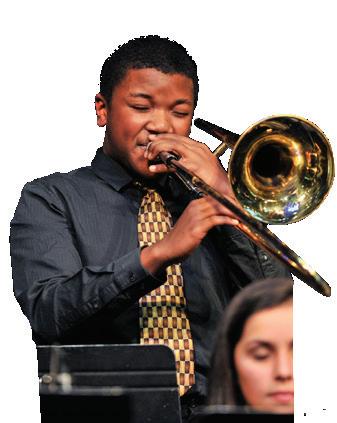








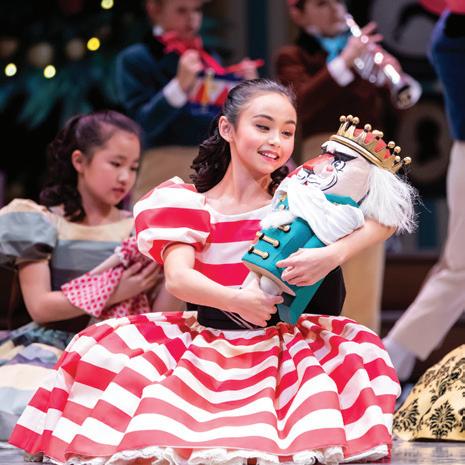
Wild Lanterns at the Woodland Park Zoo
The creators of Wild Lanterns have put together a brand-new show this year, and the event promises to dazzle visitors with large light displays and interactive areas. Nov. 14, 2025-Jan. 18, 2026. Prices vary by day, and by “scheduled date” or “flexible date” entry, 2 and under free. See website for hours and details.
Snoqualmie Winter Lights
A dazzling holiday trail with nine sparkling stops. Begin at the Snoqualmie Falls Visitor Center and journey through enchanting light displays, ending at brilliantly illuminated trees along the Boulevard. Nov. 27, 2025-Jan. 1, 2026. FREE
Fantasy Lights at Spanaway Park
Cozy up in your car as you drive 2.2 miles through more than 300 elaborate displays with thousands of sparkling lights. Choose a weekday, either early or late in the season, to avoid crowds. Daily showings Nov. 28, 2025Jan. 4, 2026. $15-$20 per vehicle. Discount days Dec. 26-Jan. 4.
Village of Lights: Christmastown Drive over to Leavenworth, where the town celebrates the holidays with over half a million lights, music and entertainment, holiday
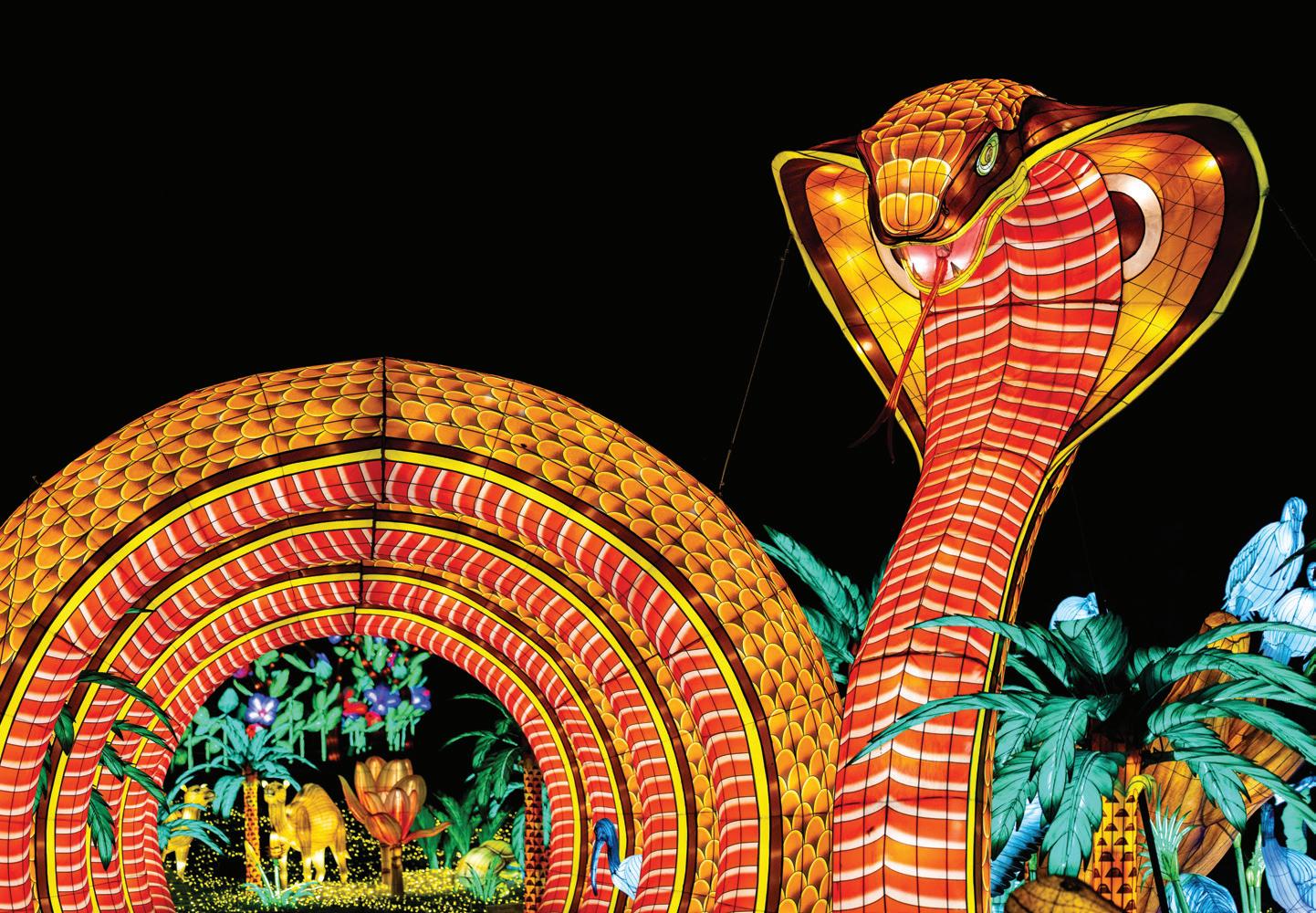
FREE
Zoolights at Point Defiance Zoo
With over a million lights, the Point Defiance



goats, then warm up with festive treats from the café. Nov. 28, 2025-Jan. 4, 2026 (Closed Dec. 24 & 25), $14-$28, children 2 and under free.
Swansons Nursery
Wander in the garden to enjoy a magical holiday outing with thousands of twinkling lights. Don’t miss the model train village or a visit to Santa’s Yurt (register on website for a Santa visit with professional photos). Nov. 8, 2025-Jan. 1, 2026. FREE
Lights of Christmas at Stanwood
Located an hour north of Seattle, this drive-thru light show in Stanwood is a must. As you drive, turn on the radio and listen to the display guide, Bruce the Spruce, as he takes you through each light display. Choose between “activity stop” nights that allow you to exit the car and enjoy activities along the route, or choose a “drive-thru only” night for a streamlined experience at a discount. Fun activities for the whole family. Nov. 28-Dec. 28, select nights. Advance tickets required and can be purchased online, $20-40 per car.
Bellevue Botanical Garden presents Garden d’Lights
As you follow the pathways through the garden, you’ll discover a variety of brightly lit displays, plant and animal shapes, rock
formations, butterflies, bees, and birds. Be prepared: It’s a 1-mile walk. Nov. 29-Dec. 31 (closed Dec. 25). Timed-entry tickets required, $10/person, children 10 and under free. Watch for $5 nights, weekdays during the show’s first two weeks.
Evergreen Christmas Lights
A Bothell tradition: Hundreds of thousands of lights will cover an entire church building and will be synchronized to music. Stop into the pavilion for warm cookies, treats, a winter village, and a train exhibit. Nightly Dec. 1-24, 6-9 p.m. FREE
Redmond Lights
A free month-long celebration of art and light in Downtown Park and Esterra Park. Visit the kickoff event at Downtown Park on Dec. 6 for live performances, free workshops, activity booths, and a luminary walk. Lights installations on view nightly, Dec. 6, 2025-Jan. 5, 2026.
Astra Lumina at Seattle Chinese Garden
Reconnect with the beauty of nature as you take a nighttime stroll through a transformed landscape. Entry includes immersive light displays, 360-degree creations, and an original soundtrack to guide you on your journey. Nov. 6-Dec. 31. Timed-entry tickets are $25$33 per person, all ages welcome.


Seattle Children’s Theatre
“The Pigeon Gets A Big Time Holiday Extravaganza”
A musical party for the whole family, featuring beloved characters from Mo Willems’ children’s books and plenty of catchy tunes and silly antics. Ages 5 and above. Nov. 20, 2025-Jan. 4, 2026. Prices vary.
O Christmas Tea: A British Comedy
This unforgettable theatrical experience leaves audiences rolling in the aisles. Brought to life by Canada’s multi-awardwinning duo James & Jamesy, this show blends the absurdity of Monty Python, the charm of Mr. Bean, and the whimsy of Dr. Seuss, promising pure joy and laughter for all ages. Nov. 19-Dec.13 at various theaters. Tickets at ochristmastea.com.
The Trans-Siberian Orchestra
The orchestra is back at Climate Pledge Arena. This year’s show, “The Lost Christmas Eve,” is a story about the importance of community. Expect an all-new, dazzling show packed with pyrotechnics, lasers, and storytelling. Shows are Nov. 22, 3 p.m. and 7:30 p.m. Tickets starting at $55.
5th Avenue Theatre
“Elf – The Musical”
A musical adaptation of the hit holiday movie. Young and old will enjoy this performance full of heart, adventure, comedy, and holiday cheer. Ages 5 and above. Nov. 28-Dec. 28. Prices vary.
ACT
“A Christmas Carol”
Enjoy the 90-minute story of Ebenezer Scrooge and the visitors that lead him to gratitude and giving at the Allen Theatre. Suggested for children 5 and above. Nov. 28-Dec. 28. Prices vary.
Pacific Northwest Ballet
“George Balanchine’s Nutcracker”
The classic holiday story of Clara and a nutcracker that comes to life, featuring Tchaikovsky’s magical music. Nov. 28Dec. 28 at McCaw Hall. Prices vary.
Taproot Theatre
“A Charlie Brown Christmas”
A musical adaptation of the cartoon classic. Join beloved characters like Charlie Brown and Linus as they search for the true meaning of Christmas. Closed captioning and sensory-friendly performances available. Dec. 4-27. $21-$37, $7 for children in laps.
Paramount Theatre
Disney’s “The Lion King”
Awe-inspiring visual artistry brings this Disney classic to life. Experience the unforgettable music and theatrical storytelling of this Broadway spectacular. Recommended for ages 6 and above and all attendees must have a ticket. Dec. 4, 2025-Jan. 4, 2026. Prices vary.
Magical Strings Annual Celtic Yuletide Concert




Visit Snoqulamie for Winter Lights & holiday movie vibes from Thanksgiving to New Years!


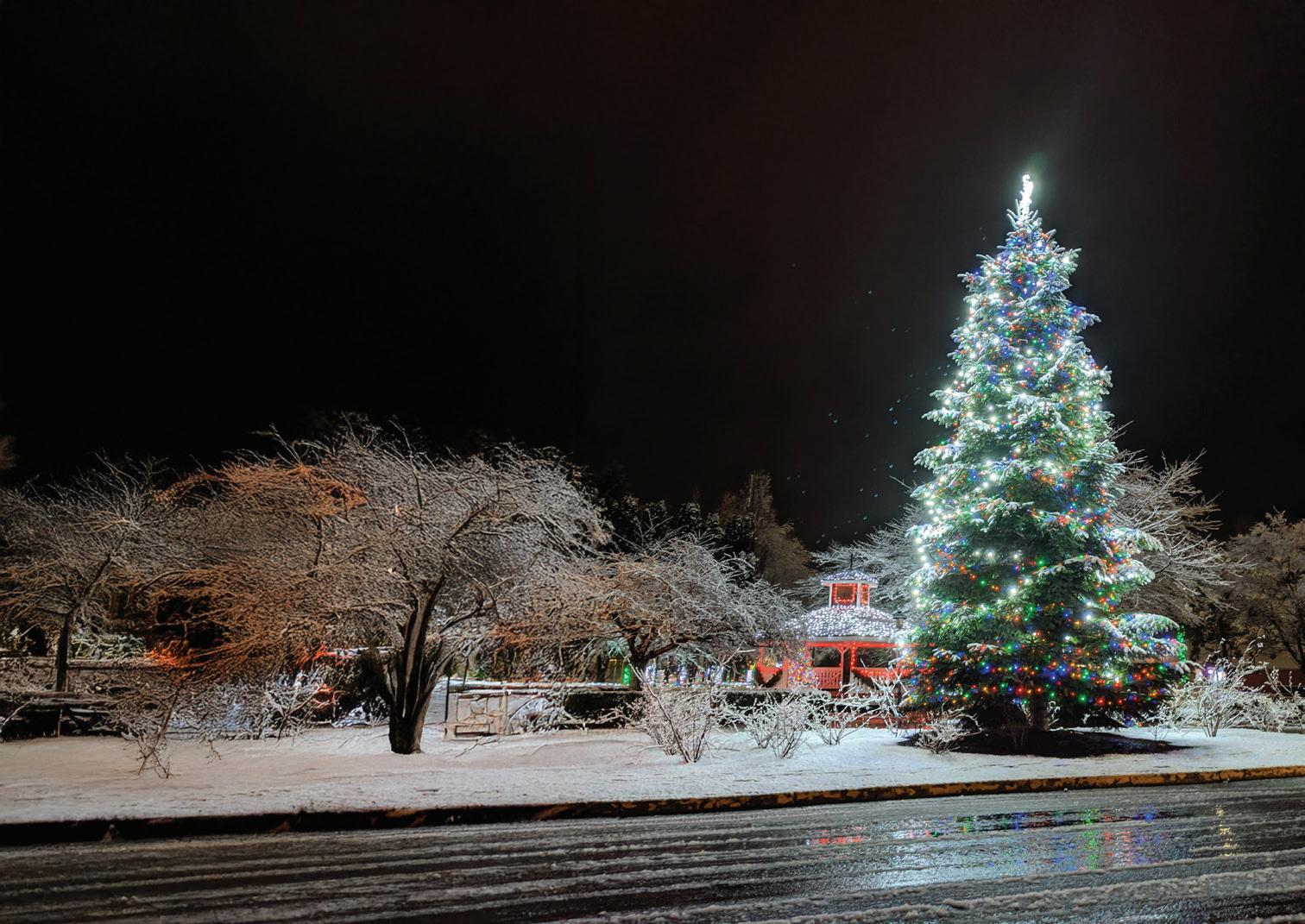





THE
The Boulding family’s musical celebration of the holiday season is a treasured tradition and afternoon of enchanting Yuletide music in Kent. Pam and Philip Boulding perform on Celtic harps, hammered dulcimers, whistles, strings, percussion, and harp-like instruments from around the world. Guests add Irish step dancing, drumming, and storytelling for a festive and memorable performance. Dec. 7, 3 p.m., $20-$30.
Seattle Symphony: Family Movie & Live Music
Celebrate the holidays with your family and a classic children’s film. Featuring The Snowman (rated G) or Disney’s The Muppet Christmas Carol at Benaroya Hall, Seattle. Ages 5 and above. Dec. 5-7, check website for times and details about which movie will be shown. Tickets start at $35.
Seattle Festival Orchestra
“Once Upon A Sleighride”
Join Seattle’s friendliest orchestra for a cup of cheer during Holiday Extravaganza Family Concerts. Featuring seasonal favorites and their annual Carol Sing Along. Wear your brightest holiday sweater and celebrate the season with Santa and the SFO. Dec. 13-14. FREE
Seattle Men’s Chorus: Holly Jolly Jingle
The Seattle Men’s Chorus brings holiday cheer with comedy, costumes, dancing, sing-alongs, and the premiere of NOTcracker Suite, a 4-minute rendition that includes hilarious lyrics, props, and more. In Tacoma, Everett, and Seattle (Dec. 5-23). Kids’ show on Dec. 20 in Seattle.


























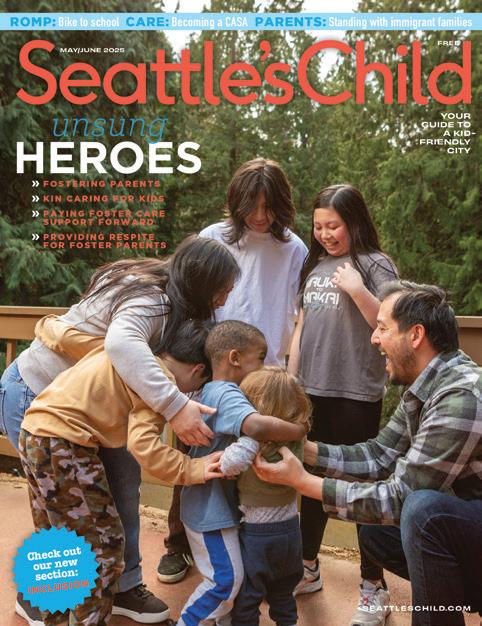

































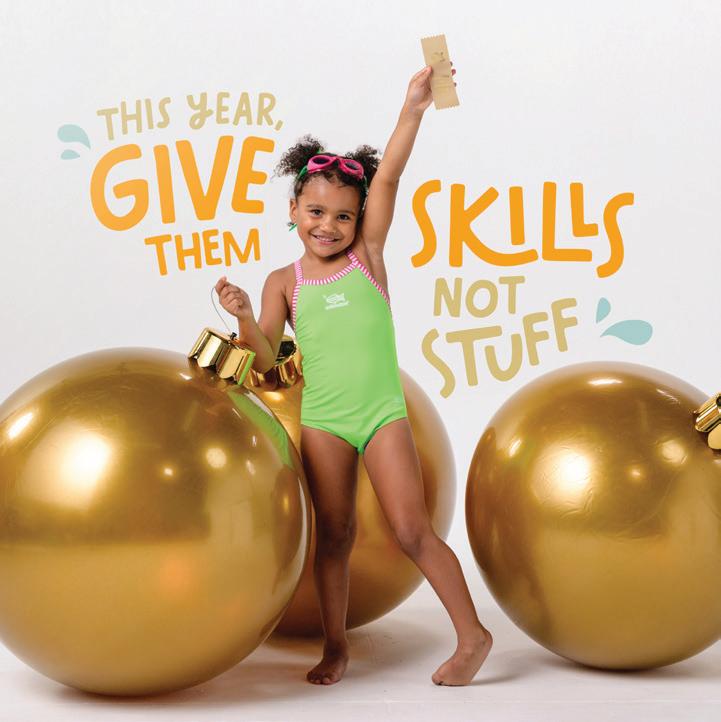
Goldfish Swim School
goldfishswimschool.com/shoreline (206) 866-2849
This year, gift skills—not stuff! Give your little one the joy of swim lessons at Goldfish Swim School in Shoreline. Our award-winning program helps kids build confidence, learn life-saving water safety skills, and have a blast in our shiver-free 90° pool—all while creating memories that last far beyond the holidays. Shop holiday packages with promo code SeattlesChild.
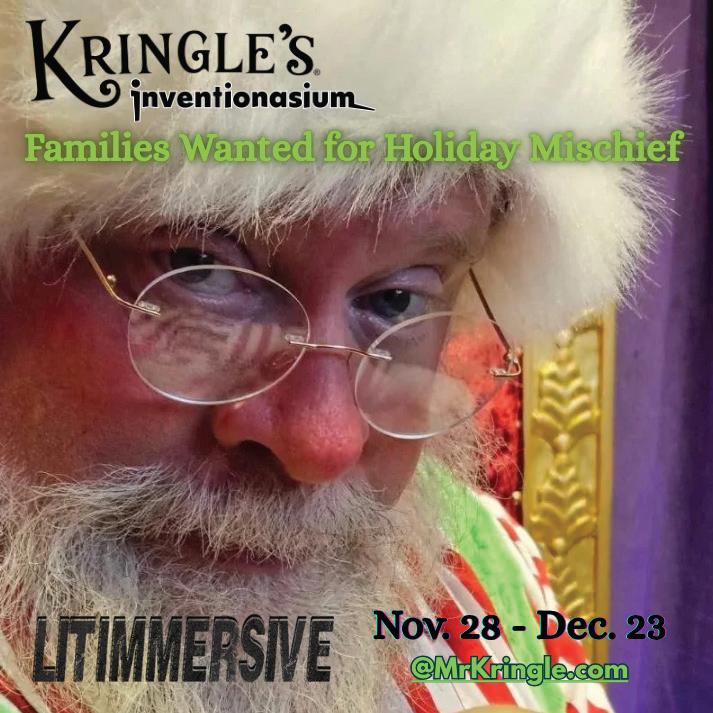
Mr. Kringle’s Inventionasium
mrkringle.com 1000 1st Ave. S, Seattle 98134
Holiday magic and mischief awaits! Unleash your inner toymaker and step into a world of wonder where every guest becomes part of the story. Imagine, create, and invent with Kringle’s elite team in his secret toy lab—a magical, hands-on holiday adventure for kids, families, and dreamers of all ages.
The all-ages tradition continues!
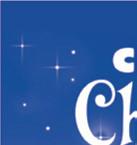

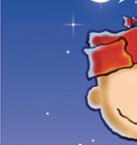

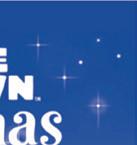
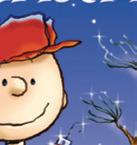
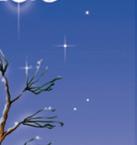
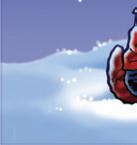
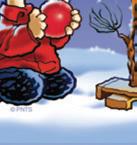

DECEMBER 4–27
taproottheatre.org/charliebrown
Taproot Theatre taproottheatre.org box@taproottheatre.org (206) 781-9707
This holiday season, Taproot has the perfect festive fun for you and your family! Join us this winter for A Sherlock Carol (November 26–December 27) and A Charlie Brown Christmas (December 4–27) for some amazing holiday cheer. Learn more and buy tickets at taproottheatre.org/ sherlock and taproottheatre.org/ charliebrown.



The Lights of Christmas an event of Warm Beach Camp thelightsofchristmas.com (800) 228-6724
tickets@thelightsofchristmas.com 20800 Marine Drive, Stanwood 98292
The Lights of Christmas is back! Experience over a million lights in creative displays and enjoy yummy snacks. Stay toasty warm in your car and grab your snacks at the entrance during a Drive-Thru Only Night, or enjoy activity stops by selecting an Activity Stop Night ticket. Great options for everyone!
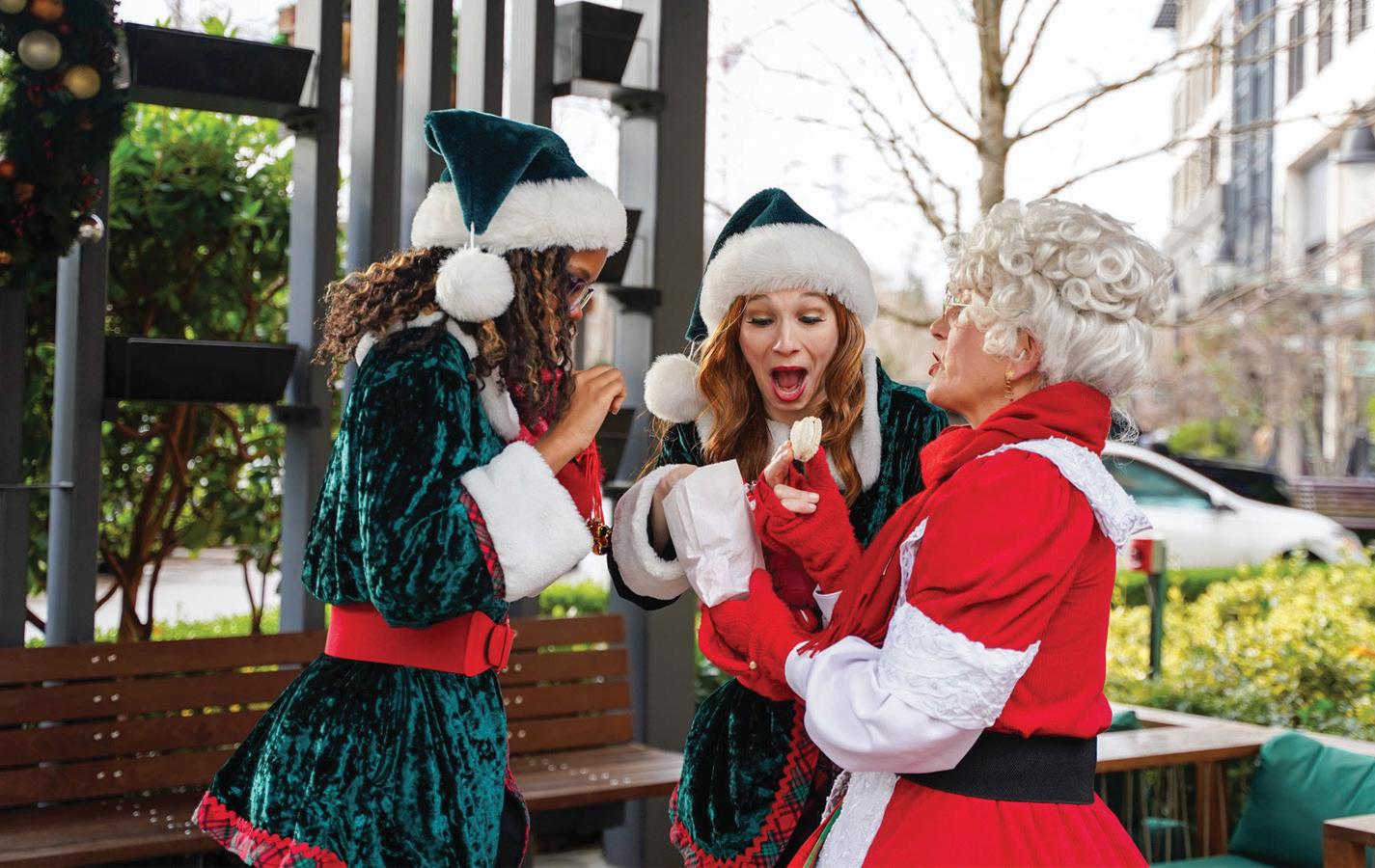
The Village at Totem Lake thevillageattotemlake.com
TheVillageatTotemLake @shoptotemlake 11901 NE Village Plaza, Kirkland 98034
The Village at Totem Lake is your holiday happy place. Experience the magic of the season with festive events, sparkling lights, and joyful moments around every corner. Visit Santa, explore family favorites like Snapdoodle Toys and Hen House, and enjoy seasonal treats from Lady Yum and See’s Candies. Whether you’re shopping for the perfect gift or making memories with loved ones, The Village is your destination for holiday cheer.
Robot vs Sloth robotvsloth.com
@robotvsloth
PIKE PLACE MARKET: 1535 1st Ave., Seattle 98101
MAGNOLIA VILLAGE: 3300 W. McGraw St. Suite 102, Seattle 98199
Love sloths? Crazy for robots? Robot vs Sloth tees are perfect for anyone in your family! Designed by Seattle artist La Ru, screen printed locally in Seattle on super soft tees. Available in adult, youth, toddler, and onesies sizes, so the whole family can match, $25–38. Robot vs Sloth has two locations now; one in the Pike Place Market and one in Magnolia Village. Their Magnolia location features a Craft Bar and art classes. Craft Bar is open daily, with rotating projects, such as DIY hats, charm bracelets, and button making.

Burn both energy and holiday treats overload. Get the whole family out to run or walk these truly fun races, many with kids’ runs. Search individual schedules and registration online.
November 16
⋅ Kirkland Turkey Trot
November 22
⋅ Seattle Tacky Turkey Sweater 5K
⋅ Carnation Turkey Trot
November 27 (Thanksgiving)
⋅ Magnuson Series
⋅ Auburn Turkey Trot
⋅ Thanksgiving Day Apple Cup 5K
⋅ Woodinville Turkey Trot
⋅ Tacoma City Turkey Trot
⋅ Issaquah Turkey Trot
⋅ Mukilteo Turkey Trot
November 29


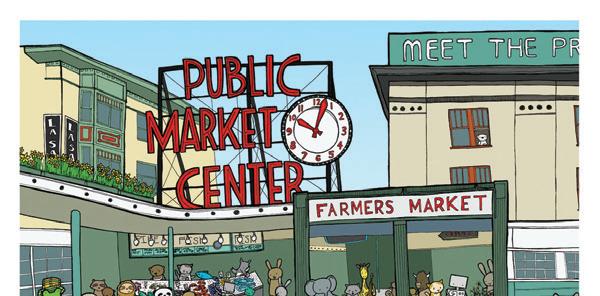
It’s the last lap of the Seattle Kids Marathon. Participation in this annual event includes running, reading books, doing good deeds, and eating right. Register now and watch them take their ‘final lap’ in person at Bell Harbor Pier 66. FREE Gobble Wobble Turkey Trot / Seattle at Lincoln Park. Offers family run (1 mile), 5K, 10K and half marathon. Prices vary.
December 6
Electric Cookie Run / Seattle. Collect a medal and cookies at the end. Register online.
December 14

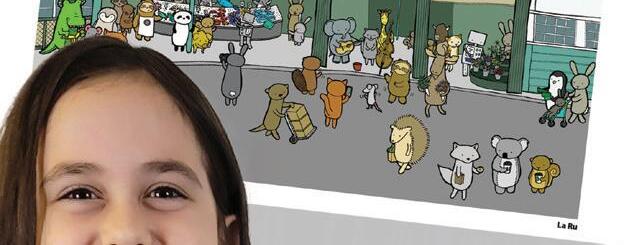
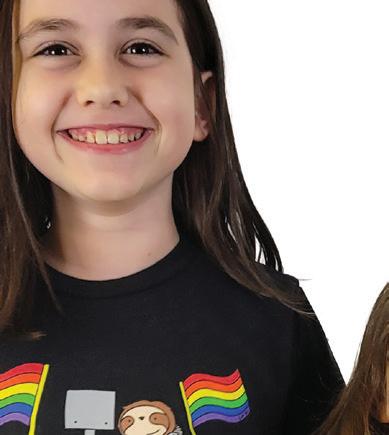
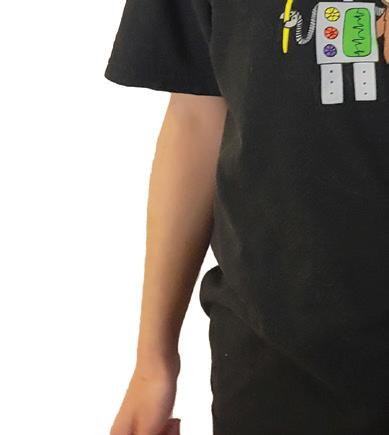




Jingle Bell Run / Seattle. Shake those bells during the Jingle Bell Run. Costumed fun begins at 8:30 a.m. at Gasworks Park. Register online.
Chase the Grinch Outa Snohomish Fun Run rolls along Centennial Trail. Fun begins at Averill Field at 9 a.m.
12Ks of Christmas. Wear Santa hats or reindeer antlers (elf gear for kids) to this Kirkland run.
December 20
Chocolate awaits at the end of Magnuson Series Holiday Fun Run. Costumes, holiday sweaters, hats encouraged.
December 24
Holiday inflatables, Santa’s house and his arrival are all part of the fun at the Christmas Eve Ugly Sweater 5K Run and Elf Dash at Puyallup’s Bradley Lake Park. Register online.
Victorian Christmas Festival
A Victorian Christmas Festival is returning to the Washington State Fair Events Center, transforming the venue into a magical winter wonderland. This beloved holiday tradition offers something for children and adults alike, with hundreds of unique vendors, captivating live entertainment, and festive attractions. Dec. 4-7, 10 a.m.-8 p.m. (10 a.m.-6 p.m. Dec. 7), $11-13. Kids 12 and under are free. Bill and Melinda Gates Foundation Discovery Center: Giving Marketplace
Find unique gifts from dozens of vendors, with the proceeds supporting immigrants and refugees, women and girls, global health, education, the environment, and much more. Enjoy family-friendly holiday activities and performances, then discover ways to take action on issues you care about. Dec. 5-6, 10 a.m.-5 p.m. FREE
Edmonds Holiday Market
Browse the aisles of vendors, snack at food shops, and support
local businesses. See website for dates and times.
City of Renton Holiday Bazaar
Get a head start on your holiday shopping and support local artists. Featuring handmade, upcycled items for purchase. More than 7,000 visitors are expected, so be sure to get there early for the best selection. Renton Community Center, Nov. 21, 11 a.m.-7 p.m., and Nov. 22, 9 a.m.-5 p.m. FREE
Crossroads Bellevue: Holiday Makers Market
The Makers Market features an array of gifts made by local artisans. Spend the day shopping, listening to live music, enjoying foods from around the world, and more. Nov. 22, 11 a.m-5 p.m. FREE Nordic Museum’s Julefest
Explore Nordic dance, treats, and music at this cultural holiday market. Shop for one-of-a-kind gifts for loved ones. The Nordic Museum hosts local retailers and artists while exposing visitors to Nordic holidays and traditions. Experience traditional foods, live
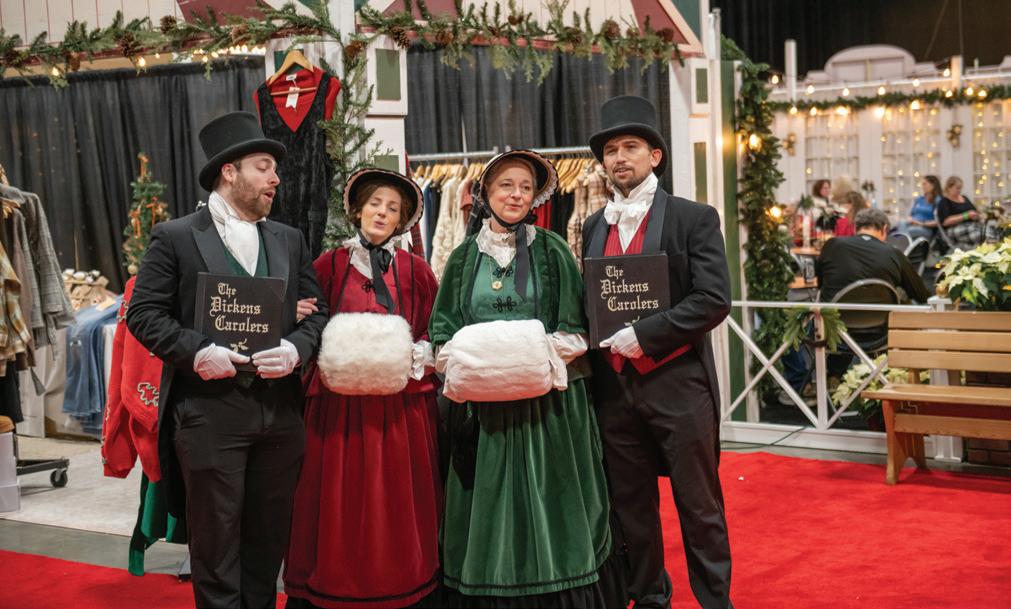
music, and more. Nov. 22-23, 10 a.m.-5 p.m. Members and children are free, non-members $5-$12.50. Under 12 is free.
Holly Jolly Holiday Market at Thomas Family Farm
Featuring more than 120 vendors, food trucks, and more, Thomas Family Farm in Snohomish is a great place to start your holiday shopping and support the local community. Nov. 28-29, 10 a.m.-4 p.m. FREE
Holiday Farmers Market and Crafts Fair at Third Place Commons
Grab your grocery bags and head to this market just in time for
Thanksgiving. A great place to buy your produce and other supplies for your holiday meals, then browse the selection of handmade items from local artisans. Dec. 14, 10 a.m.-2 p.m. FREE
Seattle Christmas Market
Inspired by traditional German Christmas markets, this monthlong celebration takes place at Seattle Center. Browse aisles of artisan crafts, gifts, traditional food and drink, interactive installations, live performances, seasonal decorations, and more. Sign up for the event newsletter


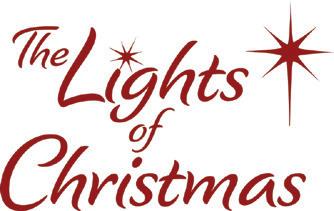















for more details. Nov. 20-Dec. 24 (closed Nov. 27). Timed entry tickets required, and prices vary.
Magic in the Market
Make memories at the 30th annual Magic in the Market. Located at Pike Place Market with over nine acres of shopping and holiday cheer. Snap a photo with Santa, enjoy DIY kids’ crafts, live holiday music, and much more. Nov. 29. 11 a.m.-6 p.m. (Lighting ceremony at 5 p.m.) FREE
Urban Craft Uprising: Winter Show
Located at the Seattle Center Exhibition Hall, this winter show is dedicated to local artisans and crafters. Featuring over 150 vendors, it offers home decor, unique gifts and a chance to explore the latest trends in art. Dec. 5-7. Friday is a preview ticketed night, 5-9 p.m., Saturday 10 a.m.-6 p.m. and Sunday 10 a.m.-5 p.m.
Phinneywood Winter Festival
5 p.m., Phinney Center, $10 (children 12 and under free).
United Indians Native Art Market
Head over to the Daybreak Star Indian Cultural Center for the annual Native Art Market. A variety of Native American art, jewelry, crafts, textiles, and other authentic gifts will be on display and for purchase. Nov. 22-23 & Dec. 20-21, 10 a.m.-5 p.m. FREE (donations gladly accepted) but go early because parking is limited.
Holiday Market at Carnation Farms
Visit this Holiday Market and enjoy hot food and drinks from culinary team, take a tour around the main grounds with their archivist, snap a selfie in the holiday-themed photo booth, and pick up winter decor from their local artisan vendors. You’ll find homemade soaps, clothes, art, sweets, gifts, and more to bring in the season. Dec. 13, 9 a.m.-4 p.m. FREE
DECEMBER 4-7, 2025 • MONROE, WA
The Phinney Ridge Neighborhood Association will be spreading holiday cheer with its 45th annual holiday market, and artists will share unique gifts for purchase. Ticket purchases help fund hot meals, senior services, memory-loss programs, kids’ activities, tool lending, and more. Attendees are invited to bring donations for their canned food drive in support of FamilyWorks. Dec. 5-7, 10 a.m.-
Novelty Hill Farm Holiday Markets

Visit Novelty Hill Farm in Duvall for their annual weekend holiday markets. They feature a variety of artisans, and shoppers will find a selection of hand-crafted items made locally. Shop for unique gifts and visit the on-site Christmas tree farm. Nov. 28 (Black Friday) then Saturdays & Sundays through Dec. 14, 10 a.m.-5 p.m. FREE
THE EARLIER



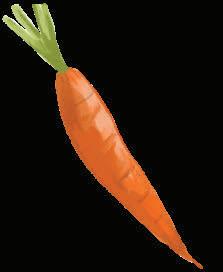









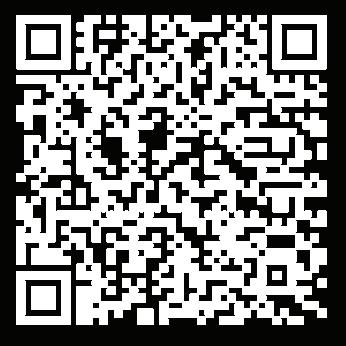

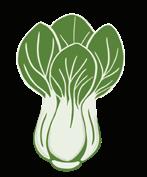








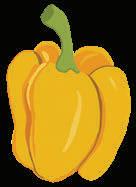





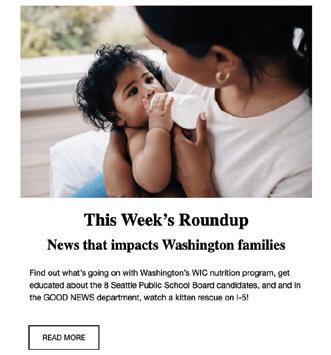


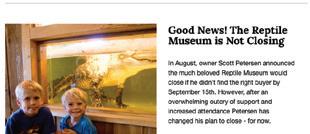






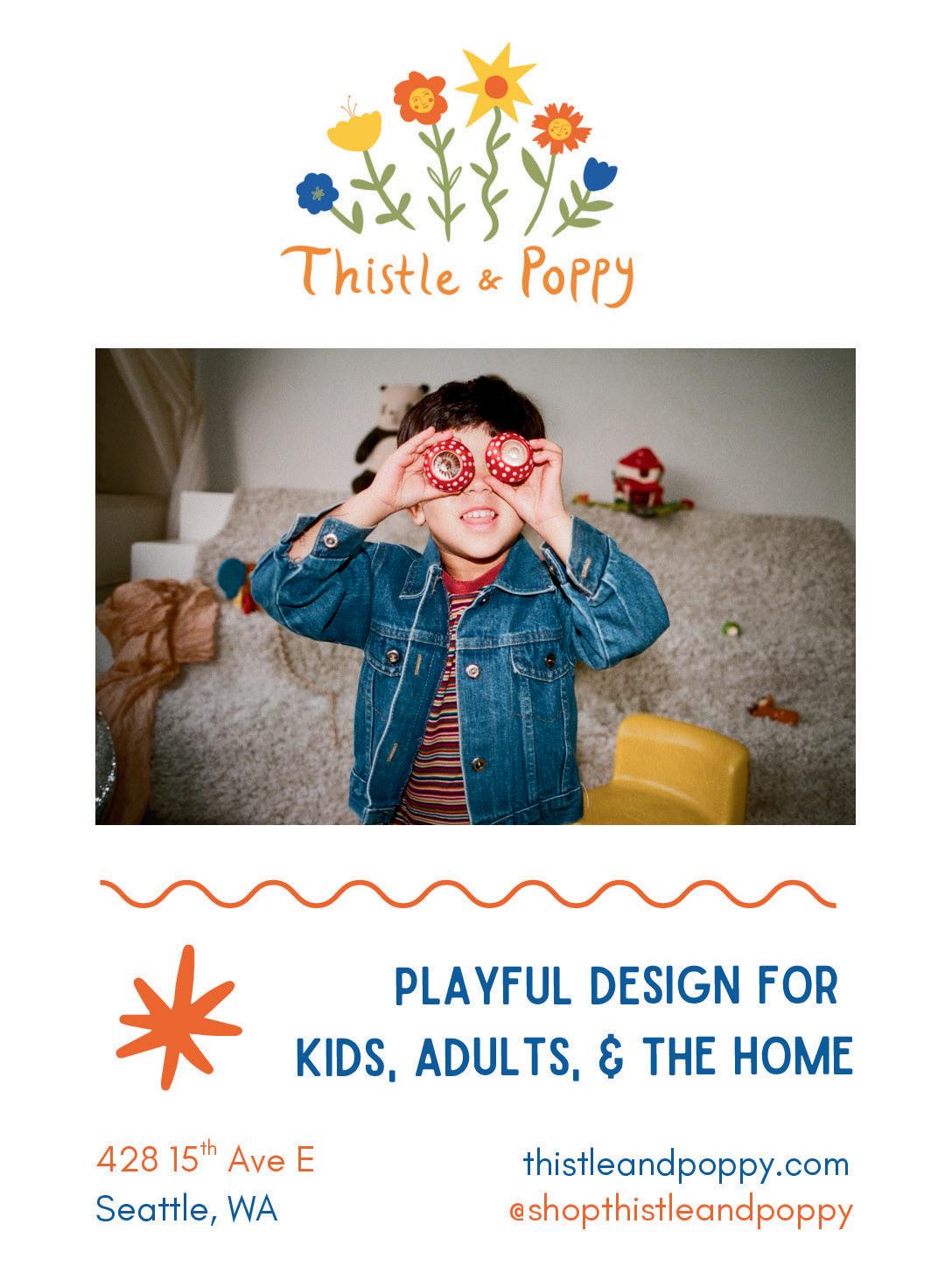
This December, KidsQuest Children’s Museum celebrates 20 years of sparking creativity, curiosity, and connection for families across the Eastside and beyond. What began as a grassroots idea among local parents and educators in the 1990s has grown into a nationally recognized destination for hands-on, STEAM-centered learning, welcoming more than three million visitors since opening its doors.
Think of KidsQuest’s story as a whimsical, layered cake: each tier slightly off-center but perfectly balanced, every layer filled with color, play, and a generous serving of imagination.
The first layer was baked in 2005, when KidsQuest opened at Bellevue’s Factoria Mall. Here, children could climb a towering treehouse, steer a pirate ship, splash in water, or imagine life on the road inside a real PACCAR semi-truck cab. Every exhibit was designed to put play at the forefront of discovery, encouraging children to experiment, solve problems, and create alongside their caregivers.
“For children, play is an essential need. It’s just as important as food, clothing, or shelter,” says Putter Bert, KidsQuest’s President and CEO. “As a vital educational resource, our mission is rooted in play to foster a love for lifelong learning. We want to give our visitors the toolkit to discover and learn something new every day.”
Beloved programs like the Gingerbread Workshop, Teddy Bear Clinic, and Pysanky Egg Decorating Workshop became signature sprinkles on the KidsQuest experience, bringing families of all backgrounds to learn and laugh
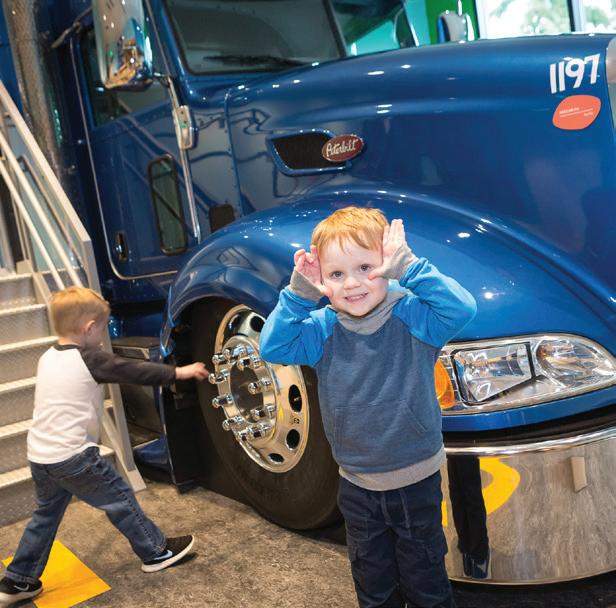
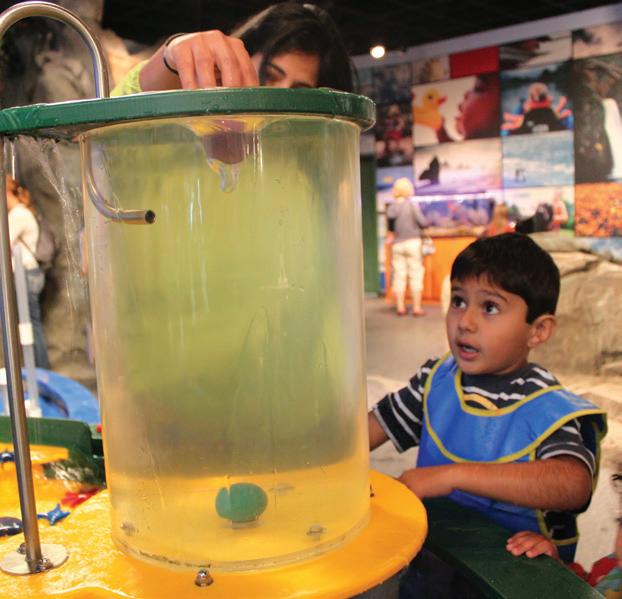
together. “We’ve always had a quilt of the community in terms of cultural and economic diversity,” Bert adds. “Everyone is welcome here. No matter what. As long as you’re kind and joyful, we want to play with you.”
As KidsQuest’s impact grew, so did its recipe for success. Educators began taking the Museum’s mission beyond its walls, bringing hands-on STEAM activities to schools, libraries, and community events across the region.
The community’s appetite for playful learning only expanded, and by 2017, KidsQuest had outgrown its first home.
That year, the Museum added a new tier—moving into the former Rosalie Whyel Museum of Doll Art in downtown Bellevue. The reimagined space offered fresh ingredients for discovery: a 2.5-story Climber, a Story Tree, the Bellevue Mercantile, outdoor space Sticks & Stones, and a dedicated Art Studio. All these exhibits were designed to help children explore STEAM concepts in joyful, organic ways.
KidsQuest’s foundation of creating learning through play remains the sturdy base beneath every layer. Through partnerships with schools, libraries, and family service organizations, the Museum continues to expand access to playful learning for children of all
backgrounds and abilities. In 2019, KidsQuest became a certified Sensory Accessible Venue, ensuring all children and families feel safe, welcome, and able to participate fully in the joy of discovery.
Today, KidsQuest stands as a cornerstone of its ever-growing community. The Museum proudly serves as the place where families connect, children lead their own learning, and imagination knows no age limit. “We don’t want to just be a museum in the community,” says Bert. “We want to be the community’s museum.”
As KidsQuest looks ahead, the next layer is already taking shape. Plans for the future include new ways to bring art and science together in the heart of downtown Bellevue and continuing to serve as a space where little hands shape big ideas.
More than a building, KidsQuest reflects the community that built it: volunteers, donors, educators, and families who have added their own ingredients to its story. And no matter how tall the cake grows, its foundation remains the same: a love of learning that lasts a lifetime.


We live in a place with many good people who, individually or as part of an organization, have many creative solutions — solutions born of their determination to keep neighborhoods strong, build connections, and ensure families have the resources to weather the hard times.
In these pages, you’ll meet 16 of those individuals or organizations. Each solution here began with one person identifying a need and taking action — a reminder that anyone, even a child, can be a spark for change. Anyone can be a maker of community.

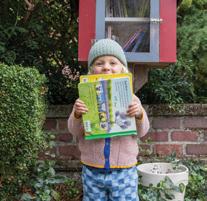
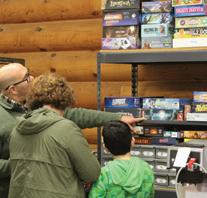
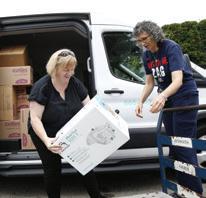
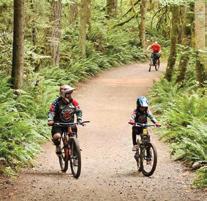
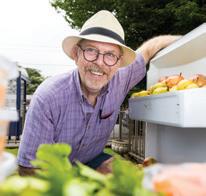


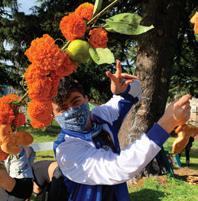

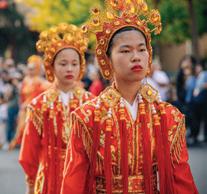
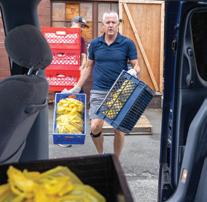

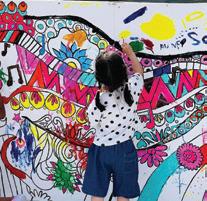
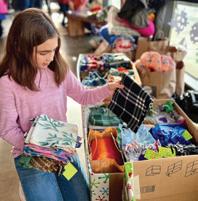

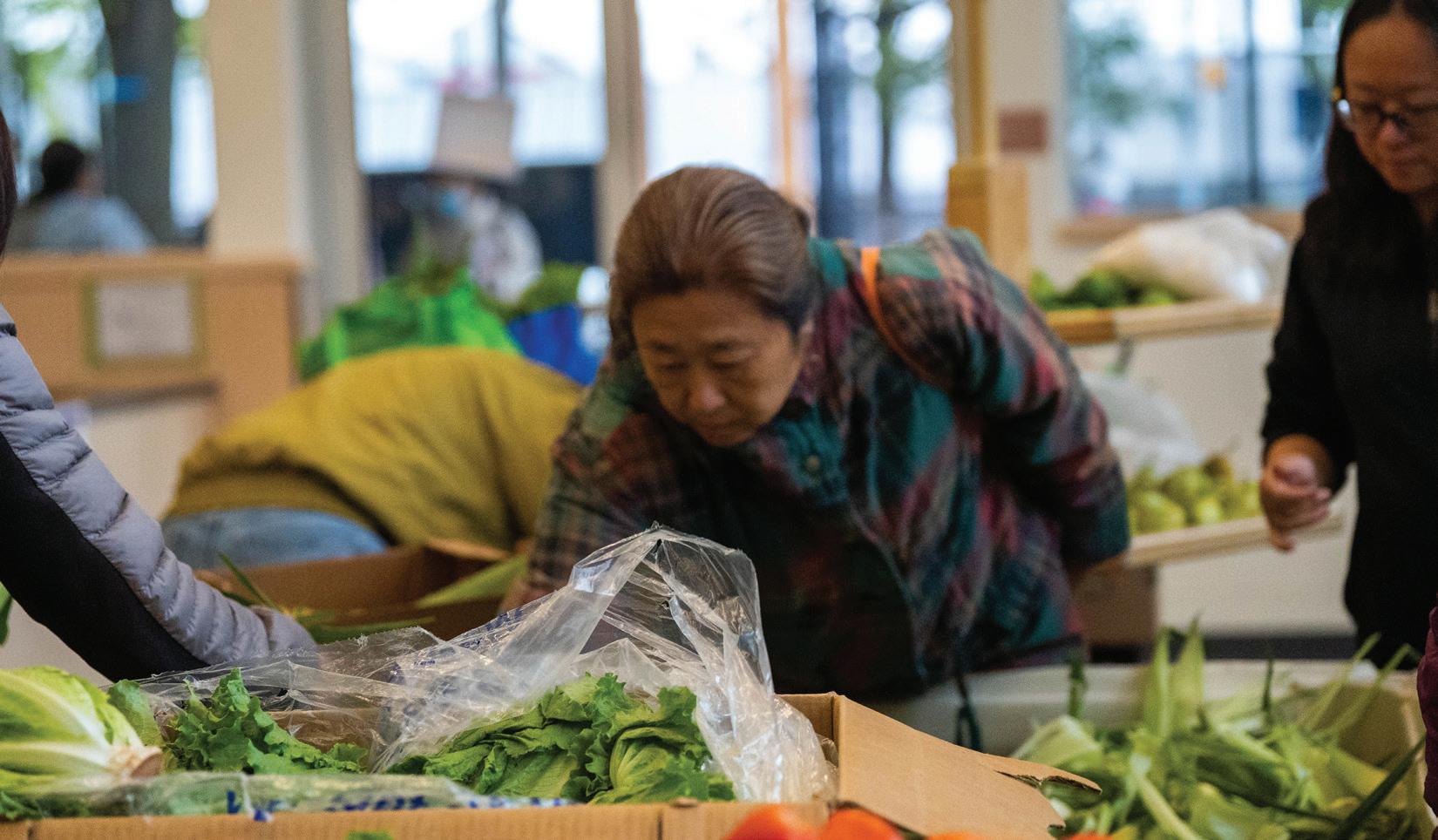
by ELIZABETH HUNTER
There’s nothing quite like the Rainier Valley Food Bank, where families can discuss recipes as they shop for produce, parents can take home needed baby care products free of charge, and volunteers can become employees on a career path.
After a $17 million renovation completed this fall, the food bank now embodies the full community resource center that it is, according to Executive Director Gloria Hatcher-Mays.
Rainier Valley families and their neighbors can access a community resource library, home delivery for food, and assistance connecting to needed services, be it housing support or employment opportunities.
The food bank provides free weekend meals for kids in South Seattle who might otherwise go without.
Soon, the food bank will allow folks to reserve a shopping time. That means parents don’t have to stand in long lines with kids. Once inside the building, the shopping experience is like that of a real grocery store, rather than the traditional food bank approach where visitors receive bags of food items they didn’t pick.
Hatcher-Mays says families come into Rainier Valley Food Bank with dinner recipes in mind, not just hoping to receive something their kids will eat.
“We have real displays, stand-up coolers, it looks like a Safeway,” said Hatcher-Mays.
She points out that many food bank staff live in the Rainier Valley and started as volunteers.
“We don’t just hire our volunteers, we put them on a career path,” said Hatcher-Mays. Inspired by a UW study that showed human service workers are paid significantly less than other industries, the food bank pays nearly double the city’s minimum wage.
Food Services Manager Otis Pimpleton explained: “We are really focused on having plans for people. If there isn’t a place to move up here, we work to improve their resume.”
Pimpleton started working in the food bank’s warehouse and now heads up a team of four people. Together, they provide more than 800 home deliveries a week and 120 to-go lunches a day, in addition to working with the food bank’s outdoor pop-up in the parking lot of the Paradise Baptist Church and food services in the new building.
“We are close to two schools,” said Pimpleton, “so we’re trying to attract more students for our to-go lunches.”
What sets Rainier Valley apart isn’t their lovely new setting, it’s the way they operate. The food bank works in concert with other food banks — not in competition.
“When we speak in one voice, with connected efforts, it becomes food system support,” said Hatcher-Mays.
Despite massive cuts in federal funding, Hatcher-Mays knows there’s enough food to go around — if it can just get where it’s needed.
“We operate from a place of ubiquity,” she said.
They saw a need and responded
by CHERYL MURFIN
photograph by JOSHUA HUSTON
Years ago in our Shoreline neighborhood, a resident potter put up a glass-encased box on a pole in front of their house.
It was a crafty kid’s dream, holding little bags of clay, pots of pottery glaze, and hand-building tools. The invitation was simple: make something out of the clay, paint it with glaze, and return your creation to the box, the sign for which read “Little Free Pottery Studio.”
When the pottery artist, supported by King County’s 4Culture program, fired your creation, they posted it on their Facebook page. Thrilled neighborhood children scrambled to collect their art on the walk home from school.
In fact, Greater Seattle seems to love the Little Free movement, launched in 2009 when Wisconsin resident Todd Bol erected the first Little Free Library. Since then, more than 200,000 registered little libraries have gone up in 128 countries, over 1,100 of them in King County.
Step into almost any neighborhood in the county and you’re likely to find a Little Free Library, where residents find and leave books for each other. But the movement is
more than boxes with free books. Besides the aforementioned pottery box, Little Free Pantries (where shelf-stable food is shared) have abounded here since 2016 and in 2020, Seattle-based artist Stacy Milrany launched Free Little Art Galleries, where artists showcase tiny art pieces. You’ll now find such galleries across the globe.
The Little Free movement sings of the simple power of sharing to build and nurture community. They inspire kids and parents to share children’s books that would otherwise sit unused in a garage.
After my kids graduated from high school, my partner and I put up a Little Free Library in front of our home. That little box full of books helped us connect with neighbors, and, by way of the notes we wrote in the flaps, we became trusted “reviewers” of parenting books and “recommenders” of kids’ titles.
Whether it’s good reading, needed food, or creative whimsy, little free giving and receiving builds community, one shared item at a time.
LEARN HOW TO HELP: littlefreelibrary.org littlefreepantry.org freelittleartgalleries.art


3. Super Familias
by ELIZABETH HUNTER
At just 12 years of age, Jose Ventura embarked on a painful and arduous journey from El Salvador to the United States. As an “unaccompanied minor,” he went from Mexico to Texas and finally to the Selma R. Carson Home.
The home, located in Fife just north of Tacoma, is a detention center for undocumented youth. Ventura spent the last years of his childhood there. When he turned 18, with no family to take him in, he was ordered to report to an adult detention facility.
Ventura went his own way. He met and befriended other undocumented youth who also lacked stable housing or steady income. In 2020, he met Rosario Lopez, an organizer and community navigator, through a mutual aid group formed during the pandemic.
“We gave him some money for food, but he came back for more right away,” said Lopez. She realized he was buying food for other kids, too.
They became fast friends. Lopez described Ventura as a born leader, charismatic, kind, and with a love for life that transcended his difficult circumstances.
Ventura started a group called Super Familias (“Super Families”) to help undocumented youth find friendship, security — even joy. At first, members organized protests against the Selma R. Carson Home, citing what they called poor conditions at the facility, but Ventura’s heart wasn’t in it.
What he did love, however, was raising money for the quinceañera of a fellow Super Familia youth, a teen named Suamy. “He respected the desire for protest,” said Lopez, “but Jose wanted to heal.”
“He told me if we can’t heal from the things that happened to us, we’ll just end up in prison or the hospital system,” Lopez said.
And then, just a year after they met, 19-year-old Jose Ventura died tragically. Lopez plans to ensure healing others remains Ventura’s legacy.
Today, Super Familias hosts cumbia dance classes, maintains a community pantry, and collects items like winter coats, shoes, tablets, computers, and phones.
“We shifted focus to the healing arts like art and dance,” said Lopez. Many undocumented youth are seeking help, she continued. Super Familias is “looking for ways to help kids heal by connecting them with their roots and culture.”
ICE raids have forced Super Familias to be cautious of sharing any location information, so they mainly communicate through Signal and word of mouth.
LEARN HOW TO HELP: Instagram @superfamilia_kc
by MELODY IP
Deb Christian, a Seattle mother of four, never expected that an email would transform her life. But when she received the message asking her to take in two boys, Christian and her family responded to the call. The family opened their hearts and their home to the children — two years that were both “beautiful and heartbreaking,” Christian said.
The experience gave her insight into the complexities and gaps within the state’s child welfare system. She also recognized an immense need for consistent support for everyone involved.
Turnover rates among U.S foster parents range from 30% to 50% each year, often within the first year. As a result, many children and youth are left in limbo and feeling unwanted — a dismal reality that Christian couldn’t shake.
“When our fostering journey came to an end, I began searching for a better way to walk alongside those who step into this space, and to support families who say yes to fostering,” Christian said.
During Christian’s research, she discovered National Angels, a nationwide parent organization that builds communities of support for foster families and children in the hope of improving the experience for everyone. In 2018, Christian launched Seattle Angels, one of 19 chapters under National
Angels. The local group began matching volunteers with foster families in February 2019.
The organization has two arms: the Love Box program, which matches volunteers with foster families to ensure family needs are met, and Dare to Dream, a one-to-one mentorship program for foster youth ages 11 to 22. So far in 2025, the organization has supported 150 children and 56 families.
Love Box volunteers range from community individuals to church groups who commit to showing up each month, whether by meeting tangible needs or simply spending time with the family. Showing up can be as simple as delivering board games, clothing, or household supplies, and as involved as planning an outing with the family, babysitting, tutoring, or mowing their lawn.
Dare to Dream mentors commit to one year of meeting with their mentee every other week to set goals and make plans to achieve them. Youth work on earning their driver’s license, practicing their interviewing skills, or learning life skills like budgeting.
“Our ultimate goal is to wrap families in the foster care community with as much love, support, and community as we can,” said Ellsworth. “Each act of care adds up to a powerful network of belonging that reminds families they are not alone.”
LEARN HOW TO HELP: seattleangels.org

by NILS DAHLGREN
Akid’s question: “How can I have more toys to play with?”
A parent’s question: “How can we clear out toys the kids don’t play with anymore?”
The answer to both is a single magic word — Abracadabra.
The Abracadabra Toy Libraries, located inside both branches of Seattle REconomy’s Tool Libraries in Northeast Seattle and Shoreline, offer families the opportunity to check out newto-them toys and donate previously played-with toys.
As Josh Epstein, Seattle REconomy executive director, describes it, “a toy library is a great way to introduce kids to the idea that you don’t need to own everything.
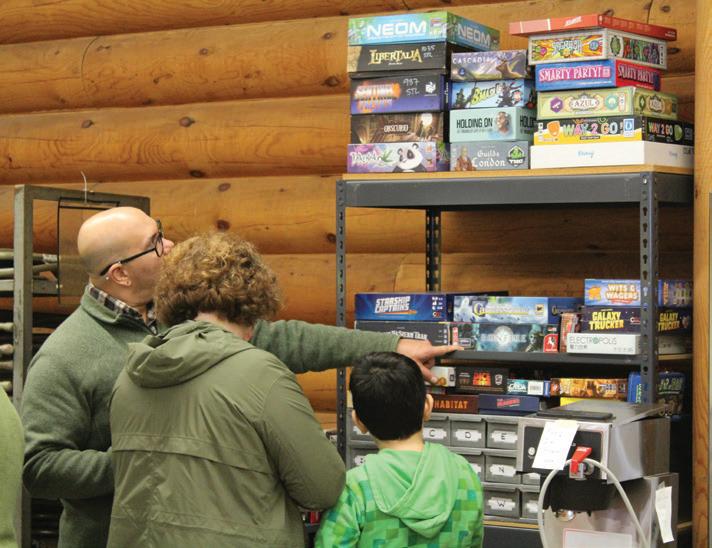
“You can have access to more toys this way,” he adds. “The more we can have people sharing these items, the less they’ll be bought, and we
can help families save money, space, and the environment.”
The idea (and the name) for the toy library came from Epstein’s 3-year-old, Cedar, and was seeded with toys they’d already outgrown. Since its inception in 2022, the library has expanded to include a rotating selection of games, puzzles, cars and trucks, dolls, dinosaurs, and, of course, toy tools.
Borrowing from the toy library is free, open to any child, and there are no return dates.
Cedar and other volunteers help keep the library’s offerings organized and fresh. “I like swapping out old toys for new ones. It feels important because I get to share toys with kids.”
Epstein adds, “Come in for the toys and maybe you’ll find a tool you need as well.”

Or party supplies. The libraries also loan out tables, chairs, canopies, and serving dishes. They even have a bubble machine. Too old for toys? Seattle REconomy also provides refurbished bikes for all ages, access to 3D printers, a seed library, and regular workshops.
Free tool lending libraries have been quite literally helping build community in Seattle since 1978, when the Phinney Neighborhood Association (PNA) Tool Library launched. Today, there are six libraries in the city, including the NE Seattle and Shoreline Tool Library, the SE Seattle Tool Library, the Capitol Hill Tool Library, the West Seattle Tool Library.and the PNA library.
The rules for becoming a member and borrowing are simple: Membership applicants typically need to present a photo ID (usually government-issued) and complete a membership form. A suggested donation or fee may be requested, but discounts or “pay what you can” options are often available for those with limited income, students, and seniors.
LEARN HOW TO HELP: seattlereconomy.org Search online for tool libraries, hours, and membership information.

by CHERYL MURFIN
Eastside resident Star Lalario knows the experience of homelessness firsthand. In 7th grade, she moved into a Spokane shelter with her mom and siblings, an experience that later inspired her to volunteer with organizations serving the unhoused.
In 2016, it became clear to Lalario that many families lived so close to the edge that buying diapers and other essentials for their babies could easily push them over into homelessness.
Lalario began delivering “care packages” that included diapers, wipes, formula, and snacks directly to families facing homelessness. In doing so, she grew close to many families and learned more about their struggles. The seed for Babies of Homelessness was planted.
Today, the nonprofit organization provides such families with baby basics “without the red tape,” but with hope and compassion. According to its website, the small nonprofit has served 28,000 low-income families within the Greater Seattle area since its inception. It has distributed more than 1.5 million diapers.
Seattleite Donna Pierce was once an overwhelmed new mom, working through the hardships and struggles of motherhood. But she was a mom who could afford
diapers, and that inequity moved Pierce to action.
“I was a stressed-out, freaked-out new mom,” said Pierce, who founded the nonprofit Westside Baby in her garage in 2001.
“Even though I didn’t have to worry about having enough money to diaper my babies, I knew our community could not stand by while new moms with low incomes, with no healthcare or in unstable housing, could not diaper their babies.”
“Donna tapped into an essential need that wasn’t being met for the West Seattle community,” said Allie Lindsay Johnson, executive director of Westside Baby.
Today, across King County, the demand for diapers far exceeds the supply. Johnson stresses that diapers are consistently identified as the number one item families request. After nearly 25 years, ample local support, and thousands of volunteer hours, Westside Baby now runs a large-scale diaper distribution program that stocks local service providers — from food banks to early learning programs.
Last year, Westside Baby distributed 2.3 million diapers, 48,600 hygiene products, and 11,300 bags of clothing to local families with the support of 9,300 volunteer hours.
LEARN HOW TO HELP: westsidebaby.org, babiesofhomelessness.org

by MELODY IP
When the Seattle Chinese Community Girls’ Drill Team is in performance mode, member faces are stern, and their movements are polished and precise. Turn off the spotlight, they let loose — laughing, joking, and doing dance moves. That dichotomy is what the drill team is
about: acting as ambassadors of Chinese culture while also being a community unto themselves.
The drill team was started in 1952 by a group of girls from Garfield High School — the “Chiettes,” as they called themselves. They wanted to do more in the community and had heard about Chinese girls’ drill teams elsewhere.
The Chi-ettes approached local Chinese
American leader Ruby Chow, who secured a funding sponsor and recruited a member of Seattle’s Police Drill Team to teach the girls precision moves. The team has been expanding its repertoire ever since, and has done national and international performances.
It’s mission is to provide “meaningful activity for Chinese girls, offering a safe space to bond and represent their families and community,” said team Director Isabelle Gonn. Throughout the drill team’s existence, its ideals of building community, fostering cross-cultural understanding, and promoting confidence have not wavered.
Still, it has flexed and adjusted to societal changes. While the original members primarily came from immigrant households, present-day members represent greater diversity, including those from multigenerational Chinese American families, those with blended cultural backgrounds, and Chinese adoptees seeking to learn more about their heritage.
Girls between the ages of 11 and 18 are invited to join the team, and aren’t required to audition or have prior performing arts experience. Team members commit to Saturday practices between April and August.
The drill team’s more than 70-year history and evolution was captured by the late Della Chen in the award-winning documentary film “She Marches in Chinatown.” In it, the deep connections between members is evident.
“The drill team is like my second family,” said Hannah Haskel, a former team member. “It isn’t like normal sports where there’s competition between teammates, because we are all connected, literally. I have made some of my closest friends and best memories.”
LEARN HOW TO HELP: seattlechinesegirlsdrillteam.com
by MELODY IP photograph by JOSHUA HUSTON
Nichelle Hilton first heard the term “weekend hunger” in 2014. The phrase describes children in America who receive free meals at school but go hungry on weekends due to their families’ limited incomes.
Eleven years later, she saw a video about weekend hunger. In it, a child is asked if hunger made studying hard. Her reply: “It’s not that I’m hungry. It’s that I picture my teacher as a banana.”
At the time, Hilton ran the Central Area Food Bank in Seattle. She asked a local school if any students experienced weekend hunger. The school identified eight kids.
“I run a food bank, there’s no way I can’t be part of the answer to this problem,” Hilton said. She grabbed items from the food bank, delivered them to the school, and with that one act of kindness,
Backpack Brigade was born.
Just one person feeding a handful of students has now expanded to hundreds of volunteers pitching in to feed 5,200 children weekly in the Seattle, Bellevue, Highline, and Renton school districts, as well as independent
schools.
Those needs add up to more than a million meals distributed during the school year. Each bag includes three breakfasts, three dinners, and three snacks. Kids can choose from nine meal options, developed by Backpack

Brigade in collaboration with a nutritionist, to cater to a range of cultural, religious, and dietary needs represented in the student population.
Backpack Brigade coordinates with school family support partners to get headcounts for the food deliveries to students experiencing homelessness who are receiving services under the McKinney-Vento Act, unaccompanied minors, and children who qualify for free and reduced lunch.
Volunteers are the lifeline of the organization — packing bags at Backpack Brigade’s warehouse in SODO, loading cars, and making deliveries.
“With the cuts in Supplemental Nutrition Assistance Program (SNAP) benefits, we’re just bracing for the new onslaught of numbers,” Hilton said. “I’m afraid how fast we will hit that cap.”
LEARN HOW TO HELP: backpackbrigade.org
S
by ALLISON PETERSON
top by Burien’s Annex Community Park on a summer evening and you’re likely to see kids zooming around on bikes beneath matching red bike helmets. As their parents and volunteers coach from the sidelines, the kids practice gliding between cones and maneuvering along freshly painted “streets” that crisscross the asphalt.
It’s all part of the non-profit Toros Cycling Club’s Bike Rodeo program. The free learn-toride program teaches children the fundamentals of riding: how to balance, steer, and pedal. And, as club founder David Rios points out, riding a bike and even racing bikes is about a good deal more than learning the basics.
It’s about community, Rios says.
Rios recalled attending a BMX racing event with his kids in 2011. It brought memories of the freedom he felt riding his BMX bike in Mexico as a child. He decided to take his children to a local BMX track where his kids fell in love with the sport. Over time, Rios noticed his family was often the only Latino family at the track.
An idea sparked: Rios would introduce cycling to more Latino families.
He began by inviting friends and people they met at the BMX track to join other rides. Eventually, the first Toros Cycling Club BMX racing team was built. Many Latino youth have joined Toros since then — not only to race as individuals, but to find connection.
“You need your team for support,” Rios says. “It’s like life. At the end of the day, it’s you and your decisions, but you need your family and community for support.”
Today, the Toros Cycling Club hosts free year-round programming, including road cycling groups, mountain biking groups, and winter indoor cycling programs that engage the whole family, not just kids.
LEARN HOW TO HELP: toroscyclingclub.org/support
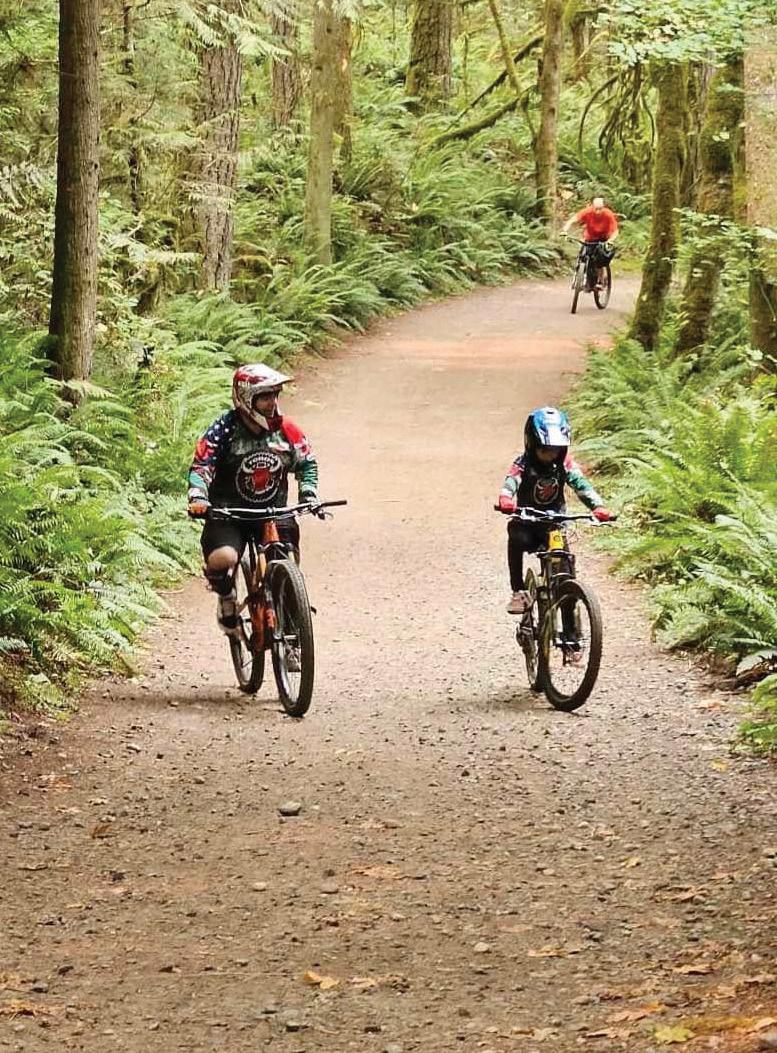
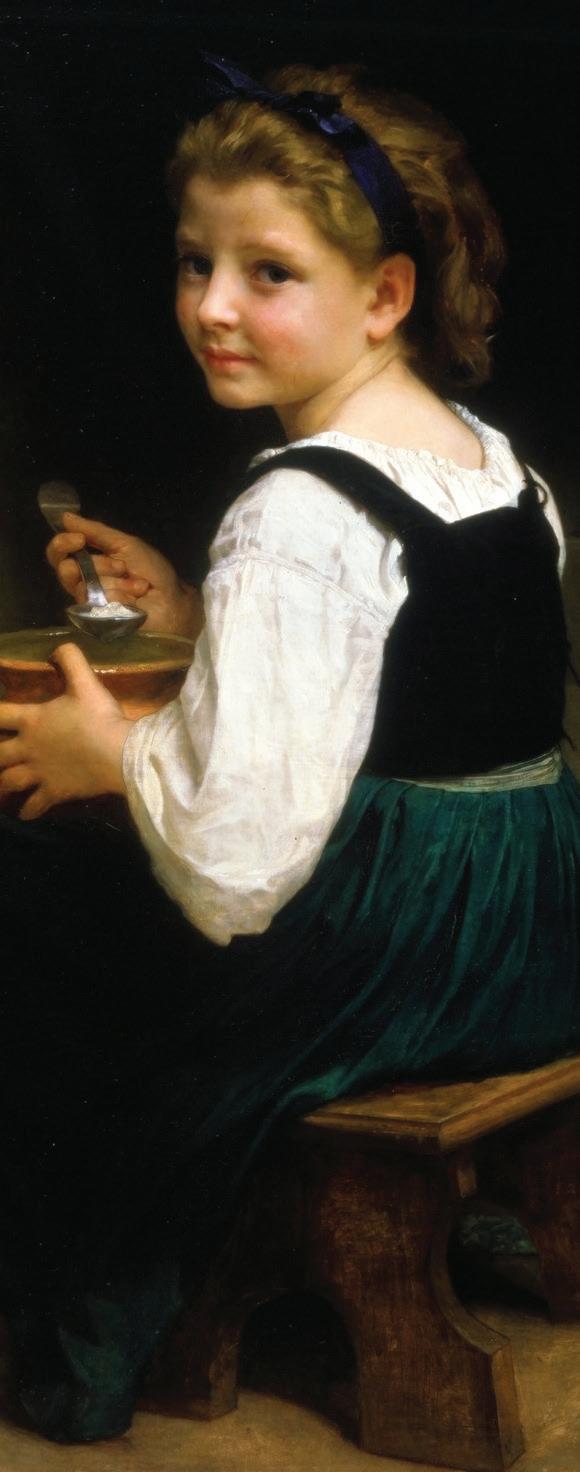
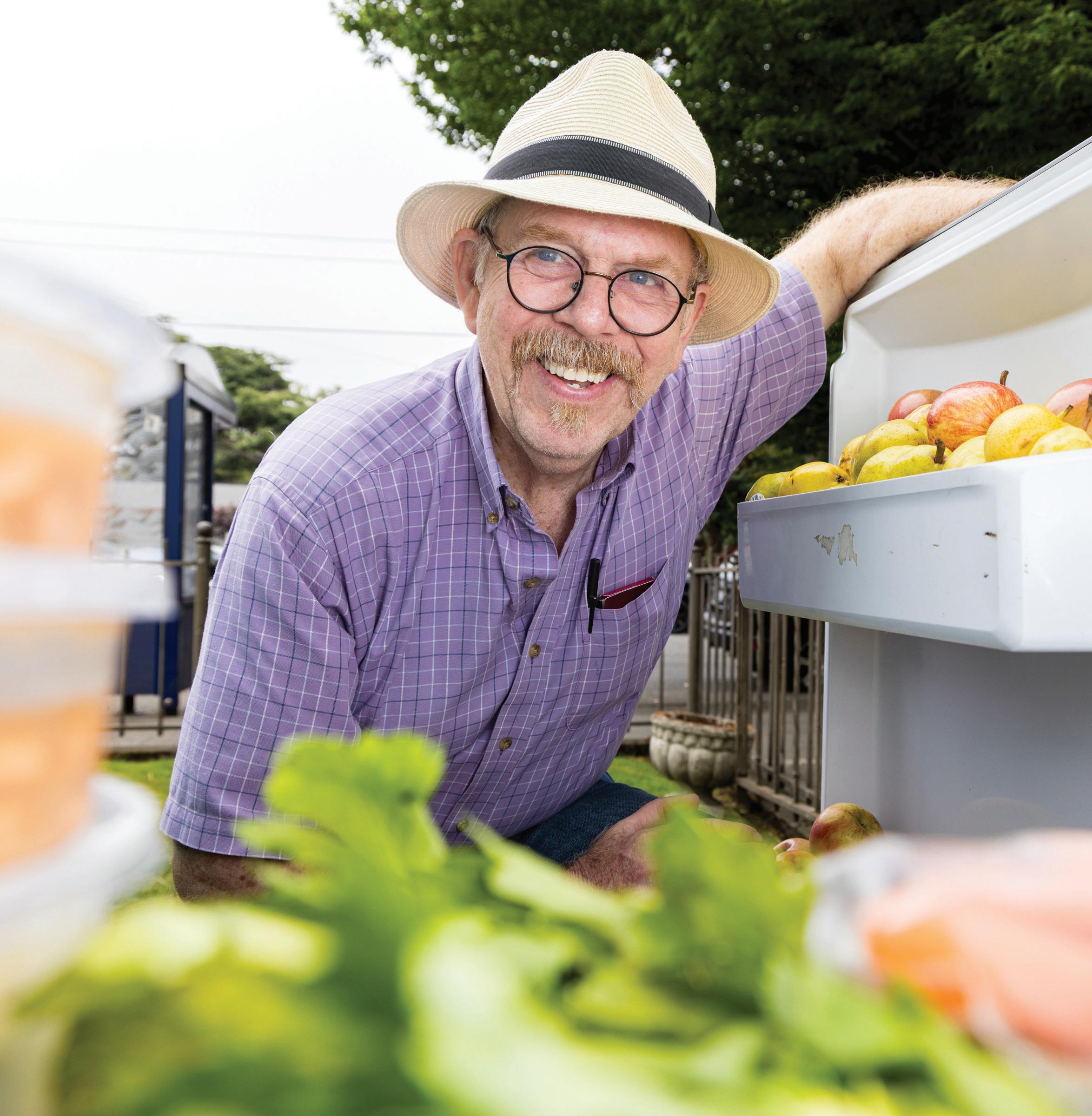
I10. Seattle Community Fridge
by ELIZABETH HUNTER
by JOSHUA HUSTON
n 2020, when COVID lockdowns forced layoffs and closures all over Seattle, thousands of people struggled to feed their families.
“COVID stripped bare the failures of our current system to keep people well and supported,” said Seattle resident and community volunteer Reid Branson. “A lot of people were going hungry.”
In response to that need, a group of “energetic” young people founded the first community fridge in Seattle. The worldwide community refrigerators movement offers a free, anonymous, and localized way for people to access fresh food, such as produce and dairy. Branson is a member of the nonprofit Seattle Community Fridge (SCF), which now helps keep seven community refrigerators stocked.
Seattle Community Fridge is not your typical charity. As a mutual aid group, SCF is a voluntary, non-hierarchical organization where resources are shared unreservedly to address a
by NILS DAHLGREN
On a recent fall evening, more than a dozen people of all ages lined up at dusk to view the early night sky in front of Volunteer Park’s Seattle Asian Art Museum. That’s where Noah Anderson had set up a trio of telescopes.
Those gathered but not at the front of the telescope line craned their necks upward, trying to spot the first star of the night — it’s a regular contest at these stargazing events, with the winner taking home a small prize (on that evening, a pack of Post-it Notes).
Anderson has been organizing this informal stargazing gathering at the park since 2008, when he brought a refurbished telescope

for a test run.
“Right away, I had people coming by interested in it,” Anderson
said. “Someone asked for an email invite to the next one, so I created a distribution list, and I send out
an announcement whenever the conditions are good.”
Over 1,000 stargazers now receive Anderson’s updates, mainly during the fall and winter months when sunsets are earlier and families can be back home before bedtime. The telescopes are all hands-on, and Anderson enjoys teaching first-timers how to adjust the equipment themselves.
“Last spring we had a 9-yearold girl out here for the first time and she really got into it,” Anderson said. “After I showed her how to focus the main telescope, she ran it for a good ten to fifteen minutes while I set up the other scopes, constantly tracking Venus for everyone wanting to take a look.”
community need. There are no conditions or criteria for receiving resources, no paid staff, and a minimal budget.
“There’s no concept of ‘deservingness’ and no inherent political agenda,” Branson explained. “It’s just people who have a lot giving to people who don’t.”
Seattle Community Fridge currently has six locations, with one on the way. They include:
• Phinney Ridge: Woodland Park Presbyterian, 225 N 70th St.
• Dunlap/Rainier Beach: In alley at 48th Ave. S & S Thistle St.
• North Beacon Hill: 1307 13th Ave. S
• Capitol Hill: St. Joseph Parish, 745 19th Ave. E
• Inside LGBTQ+ Center: 400 E Pine St.
• Burien: 12027 10th Ave. S
• Coming soon: Estelita’s Library, 241 Martin Luther King Jr Way S
Though SCF doesn’t collect data on people who visit the fridge, relationships form organically.
For example, SCF member Reily Ingram-Sowell would pick up food from the Delridge Farmers Market to stock the Rainier fridge.
“I keep a pretty regular volunteer schedule,” Ingram-Sowell said. She began to notice a small crew of familiar faces every time she dropped off food. “We didn’t speak the same language, but we were able to communicate what they needed, and now I see them pretty much every time.”
Likewise, when Burien SCF volunteers noticed a small community of Afghan people visiting the fridge, they started stocking items traditionally used in Afghan cuisine.
LEARN HOW TO HELP: seattlecommunityfridge.org
“We’ve had families come back year after year and see the kids grow up,” he added. “We also get teachers telling their students about us, and then they’ll come out with their parents.”
On that particular night, more telescopes appeared as the light faded — Dobsonians, Newtonians, Schmidt-Cassegrains, and Refractors. Several of them trained on a ring nebula to the south. With the help of a few participants, Anderson moved the largest scope for a better view of Saturn rising in the east. Stargazers, young and old, moved from one telescope to the next and back, sharing fun astronomical facts and exclamations of wonder.
Depending on conditions and the time of year, spectators can view a vast array of stars, planets and astronomical points. But for Anderson, the moon is still a favorite: “The more I look, the more I want to look.”
LEARN HOW TO HELP: Email VolunteerParkTelescopesEmail@gmail.com to be added to the watch list.
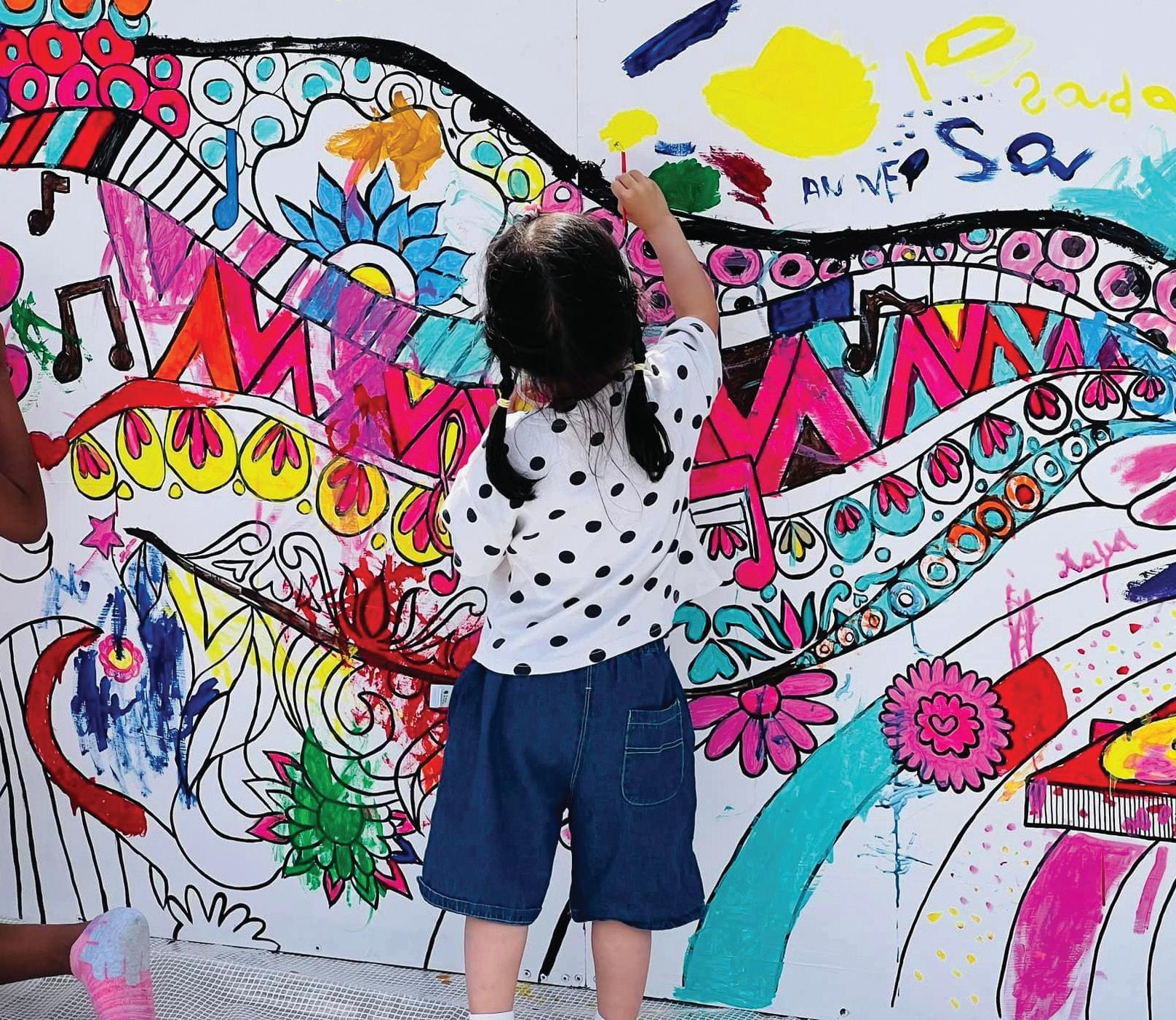
by DAVID TURNER
The word “prodigy” is a weighted one. It puts a huge burden on a child.
However, there’s really no other word to describe a 12-year-old child who creates art on the scale that Zoya Eshwar does. From the age of two, Zoya has produced remarkable art influenced by cubism, realism, symbolism, and even the television artist and instructor Bob Ross.
Zoya’s mother runs an art studio/school in Redmond. As with many mothers, she took her child to work with her, in lieu of formal child care. Noticing Zoya’s curiosity, she provided her with some supplies. She has photos of Zoya reproducing exactly what she saw, with little instruction. Zoya just did it.
By age five, Zoya’s work was winning awards; she donated the prize money to charity. Recently, Zoya spoke about her experience with a friend who has Down Syndrome. They created art together, and doing so ignited a spark in Zoya that inspired her to reach out and help others.
Pastel Souls, a youth-led art initiative, was the flame that burst from that spark. Through it, Zoya and other volunteers bring free art workshops or artmaking experiences to retirement communities, libraries, parks, and Boys and Girls Clubs. Basically, anywhere people gather.
The artist also hosts free community service artmaking projects at her mother’s Sweety Saradha Arts Studio. Participants create art to donate to local nursing home residents, including items like suncatchers and Christmas ornaments.
“Volunteers are the heart of what we do,” Zoya

said of Pastel Souls. “We make sure everyone feels safe to share what they’re going through — whether happy or sad. We encourage each other to be strong and speak your heart out.”
While all Pastel Souls events are grounded in artmaking, Zoya stresses: “It’s about building community, spreading kindness, and helping children realize that their creativity can make a difference in the world. That’s the spirit behind everything I do.”
There are many reasons Zoya Eshwar has been recognized by the nonprofit Points of Light as an ‘Impact Icon’ and received numerous accolades awards for her art and philanthropy. Chief among them is Zoya’s belief: “Art has the power to heal.”
LEARN HOW TO HELP: zoyasrainbowtouch.com
by CHERYL MURFIN
Brothers and West Seattleites, Erik and Garet Bell, had a long-standing date on Saturdays. The two would meet to walk in their Alki neighborhood, picking up trash as they went. As Erik Bell discovered, that simple act was not only beneficial to the neighborhood, but also provided a mental boost — a boost that has blossomed over the years into thousands of neighbors helping to keep Alki beautiful through the organization A Cleaner Alki.
Erik Bell’s daughter, Evelyn, also caught the cleanup bug, which is why several years ago she and two other members of her
Girl Scout Cadettes troop 40149 — Paige Dempsey and Emma Kelley — created A Cleaner Alki’s Block Drop program. Their goal? To make cleanups in Alki and in other Seattle neighborhoods incredibly easy:
Simply show up at a designated location, grab a garbage pick-up stick and trash bucket, choose a direction, and walk, nabbing bits of garbage as you go. No supervision, no fuss. Wherever you see a Block Drop sign and equipment, you’re invited to join the effort, participating for as long (or as short) a time as you like. Volunteers return to the Block Drop equipment sites to collect the trash.
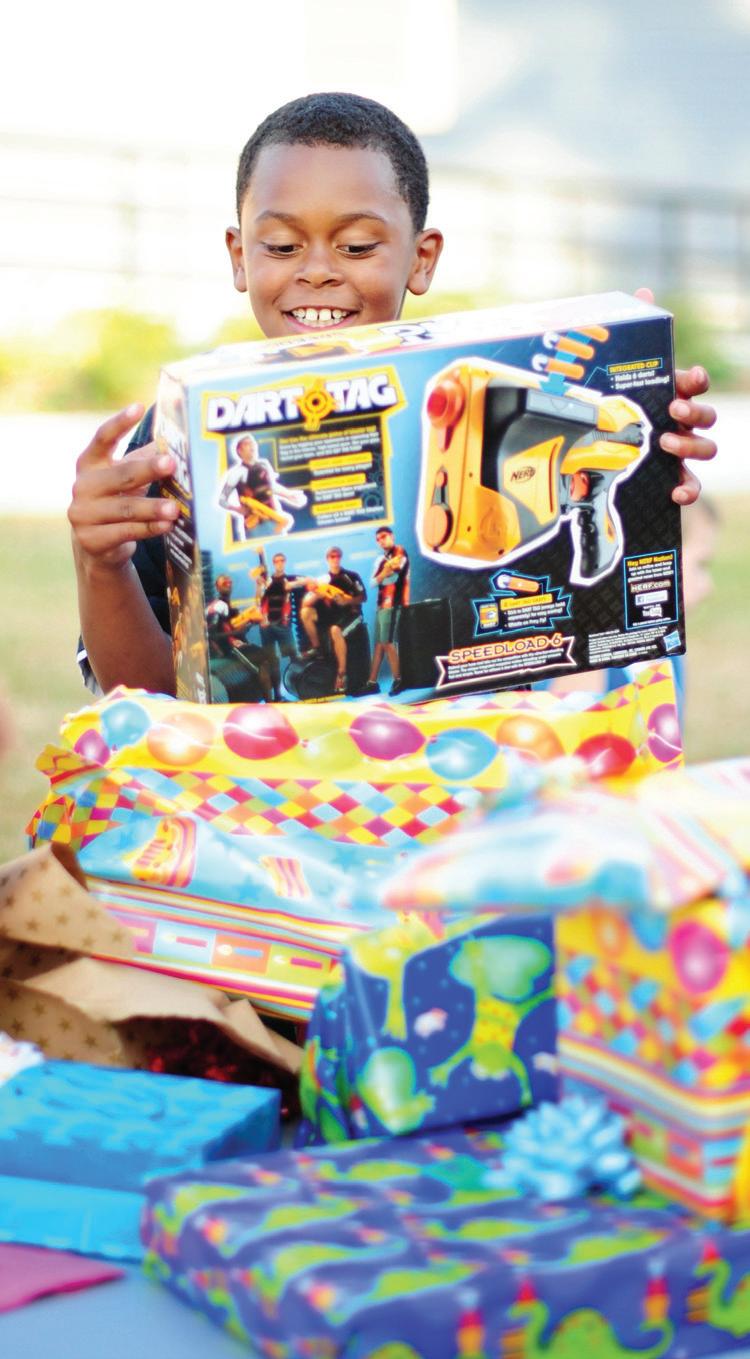
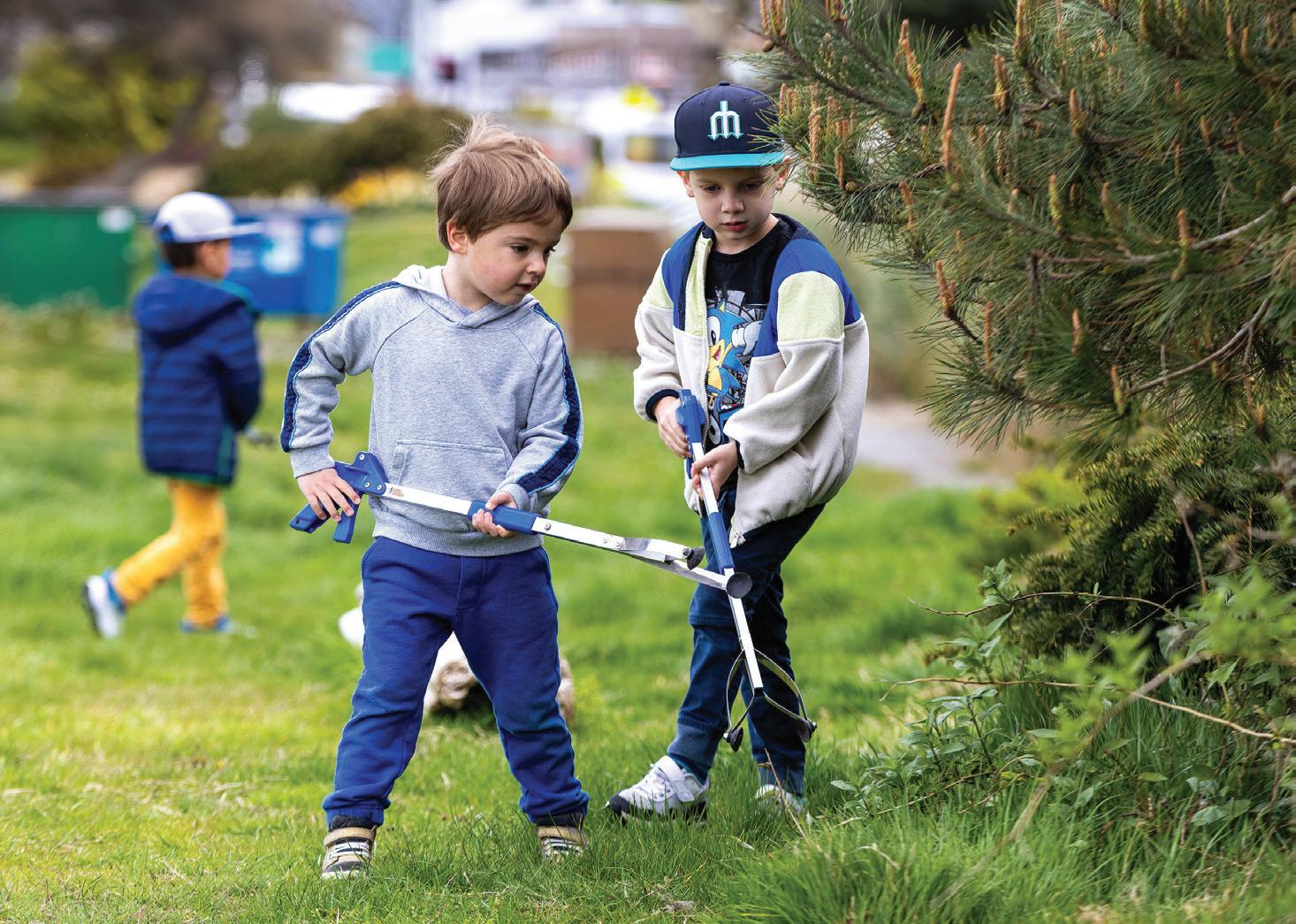
As Emma Kelley has said: “What really makes the Block Drop work is the community coming out and joining in.”
Across the city, a group of dedicated volunteers is similarly focused on Green Lake. Local broker G. Todd Young founded the Green Lake Litter Patrol in 2012 to help keep one of Seattle’s most popular walking spots glistening.
Since then, volunteers have logged more than 10,000 hours picking up trash — with a focus on clearing “micro trash.”
Microtrash are very small, easy to overlook, pieces of waste that are harmful to wildlife and the environment. Each week, the volunteers meet for a 2-hour walk-and-pick session with an eye out for tiny plastics, cigarette butts and other broken
down bits.
Green Lake Litter Patrol volunteers range from preschoolers and their parents to seniors. And, the group particularly welcomes students required to do community service as part of meeting their educational requirements.
LEARN HOW TO HELP: byandby.org (Block Drop) greenlakelitterpatrol.com
by MELODY IP
Kids and parents sometimes start planning birthday parties months in advance of a child’s special day, coming up with themes, decorations, activities, and guest lists.
For families living in shelters, however, celebrating a child on their birthday can be a challenge.
Chris Spahn and Shannon Avery are working to change that through their nonprofit Birthday Dreams. The organization has hosted birthday celebrations for nearly 17,000 children living in King, Pierce and Snohomish County shelters.
The idea for Birthday Dreams came in 2009, when Spahn and Avery were considering how they could better support children in their community. Birthdays were near and dear to both founders. In fact, Spahn, who believes all children deserve to be celebrated, had just planned a large party for her daughter that year. But while many organizations focused on giving Christmas gifts, no one was doing anything about birthdays.
The two began gathering in-kind donations from neighbors and friends, and putting together birthday party packages. They contacted local shelters and began reaching out to companies like Microsoft and Boeing to procure donations.
Today, Birthday Dreams partners with more
than 80 shelters to make sure kids feel cherished on their big day, regardless of their family’s circumstances. Shelters can host one large party on site or throw their own festivities along with residents, with all the food and supplies provided by Birthday Dreams. Or, individual children may receive a “Birthday in a Box” — cake, decorations, party games, gifts, napkins, and plates, all around a theme chosen by the child.
Volunteers are a large part of making it all happen, from wrapping gifts to delivering parties. Whenever possible, says Birthday Dreams Program Manager Robbie Green, “Our goal is to make sure that the parents can still be the hero. That is everything for a parent.”
For Green, the work of Birthday Dreams is personal. She was placed at Birthday Dreams in 2018 through the Department of Social and Health Services’ career pathways program, while her family was living in a shelter. When parents call, panicking about their circumstances, Green offers reassurance.
“We’re the village for people sometimes,” Green says. “We all have pretty much a story of utilizing the services prior to being an employee here, which helps us put the love back into the community.”
LEARN HOW TO HELP: birthdaydreams.org
by ALLISON PETERSON
On a quiet Saturday morning when most children are still cozy in bed, a group of about 70 children is already bustling around setting up their vendor booths for the annual Kenmore Children’s Business Fair.
Walking among the stalls, you can feel the excitement as the kid-trepreneurs set out the products they have developed over the past several months — everything from hand-crocheted stuffed animals to tabletop succulent gardens.
Throughout the day, hundreds will visit the business fair to shop in the festive atmosphere and support the kids’ efforts.
The fair is much more than an opportunity to sell products. It’s the mission of the grassroots Thoughtful Citizens in action. The organization is all about building community.
The seed for Thoughtful Citizens was planted in 2017, when founder Maura Query was looking for community service opportunities that she and her young daughter could participate in together. Most organizations had age restrictions or required continued commitment, making it difficult for parents to volunteer with their children.
After an unsuccessful search for things that she and her daughter could step up to help with on a whim, Query decided to begin her own all-ages and all-abilities community service event.
“Everybody’s individual contributions can make a difference,” says Query, “And I wanted to remove barriers so more people can serve in their community.”
Thoughtful Citizens has evolved into an organization with a far-reaching community impact. All events are designed to allow people of all ages and abilities to work together toward a common goal in support of the community.
To date, volunteers with Thoughtful Citizens have collected over 700 pounds of trash, created and distributed over 2,400 cards to seniors, and produced and delivered over 2,200 scarves to unhoused individuals. The impact of volunteering goes far beyond the event itself.
“I want volunteers to leave feeling more empowered to do good in their daily lives,” says Query.
LEARN HOW TO HELP: thoughtful-citizens.org

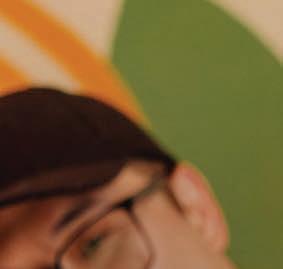
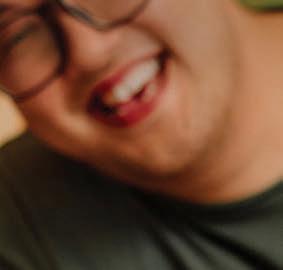


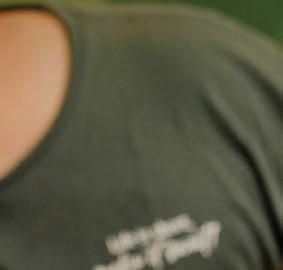



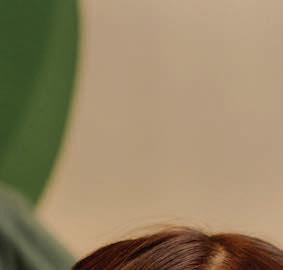




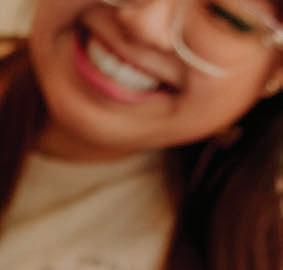


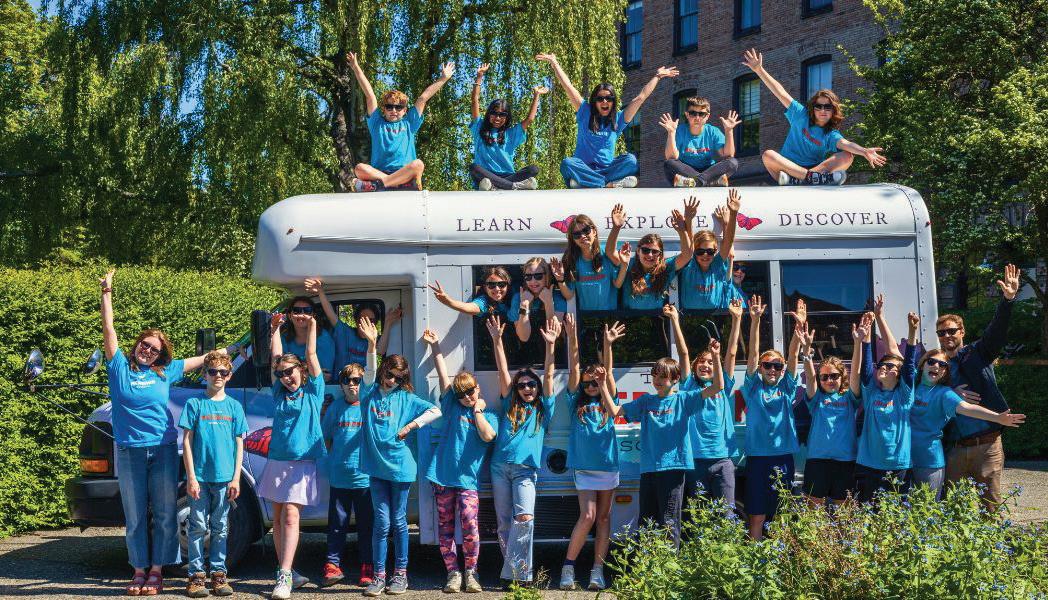
632-7154
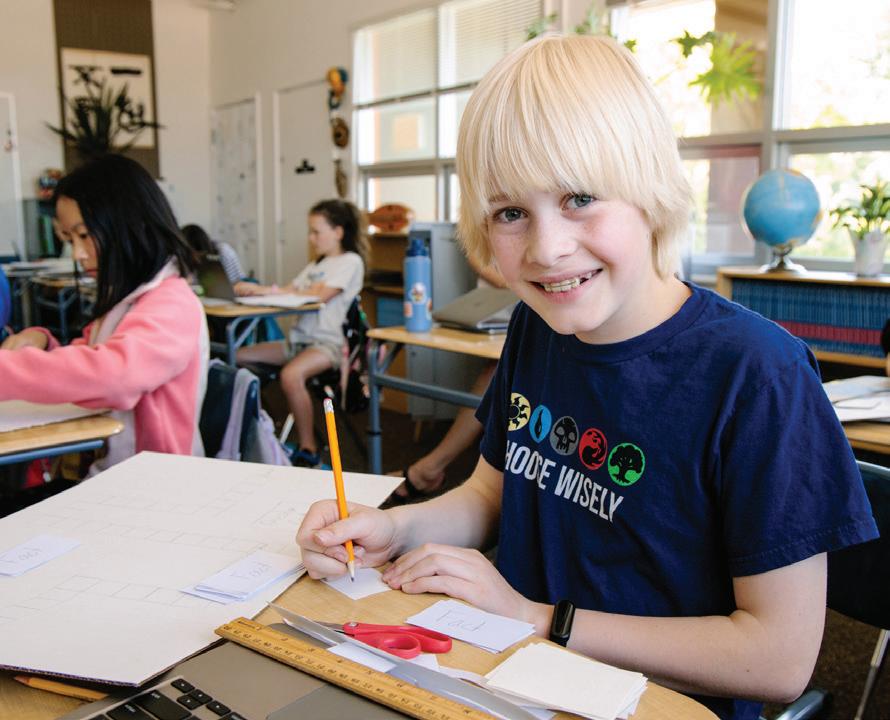
Although gifted children from all racial, cultural, and economic backgrounds exhibit these qualities every day, they still may be overlooked in class. Not so at Seattle Country Day School. We offer all our students an environment where they can ask questions, create, and grow intellectually and emotionally. See if SCDS is right for your child. Reach out today to admissions@seattlecountryday.org.
Seattle Country Day School For gifted children, K–8 seattlecountryday.org/admissions



by MELODY IP photograph by JOSHUA HUSTON


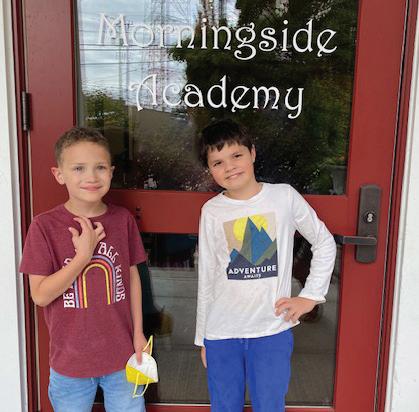
The idea of owning fruit trees can be appealing. But what happens when the fruit drops faster than you can pick it, littering your yard and rotting there?
Enter City Fruit. The Seattle-based nonprofit harvests fruit from public and private orchards, distributing it to more than 30 food banks, meal programs, and schools. That effort increases access to healthy food while reducing food waste. The organization was founded in 2008 by Gail Savina, who galvanized volunteers to collect Seattle’s donated surplus fruit. Turns out, apple, Asian pear, and pear trees are particularly abundant in the city, with homeowners at a loss as to what to do with such bounty.
In 2024, City Fruit harvested more than 28,500 pounds of fruit, which equates to about 90,000 servings of quality fruit distributed to community partners. “We’re treating people
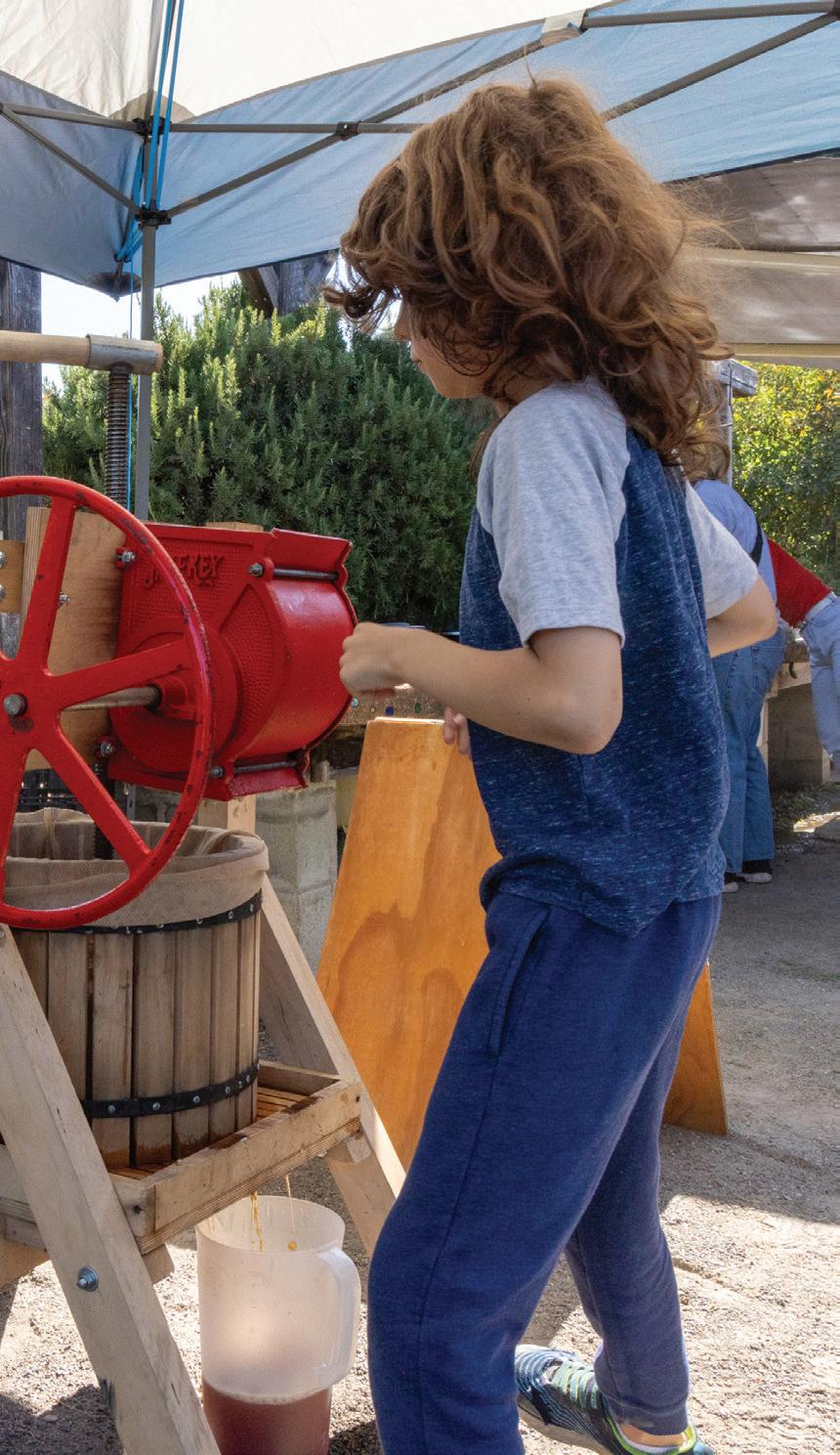
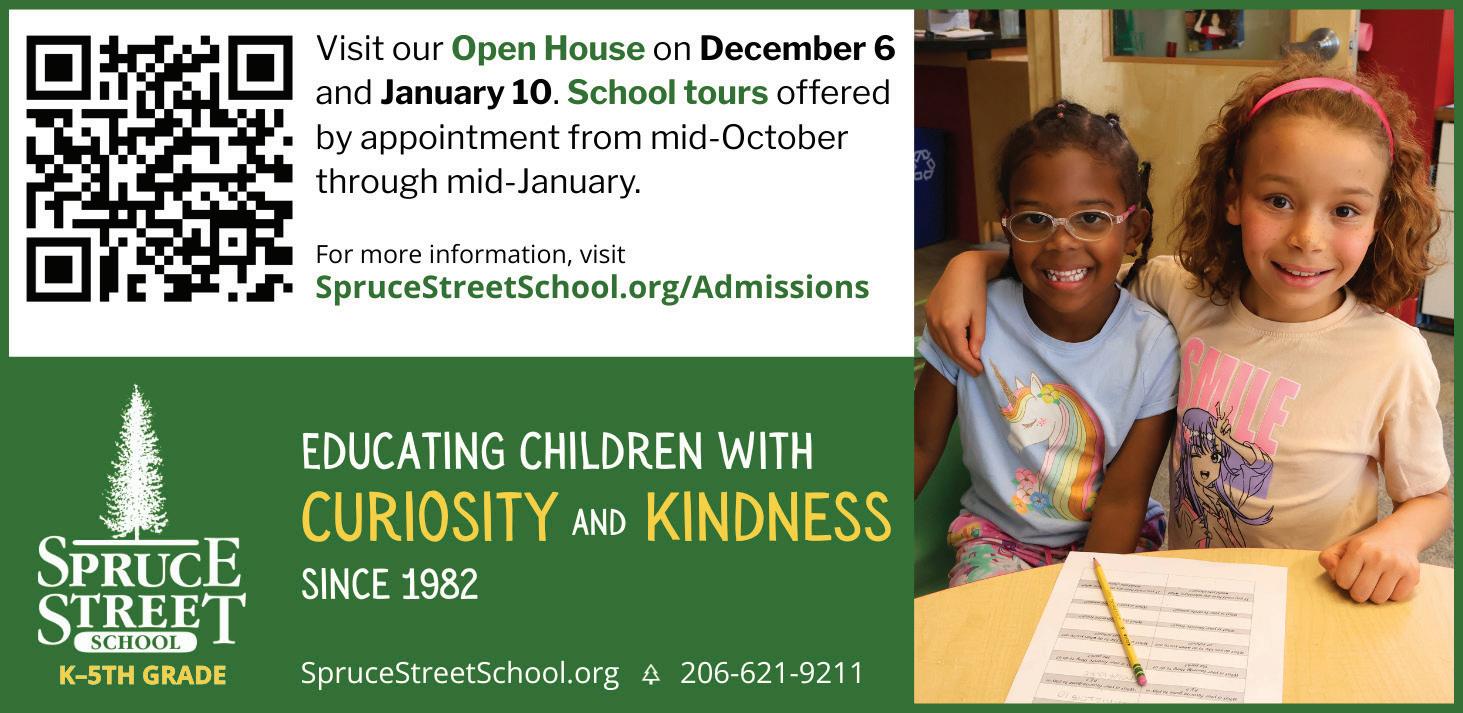
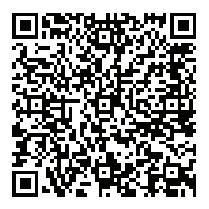


with dignity and respect, and giving them fruit that’s going to be good quality for them to enjoy,” says City Fruit Executive Director Emily Tomita. “It’s filling my deep-rooted Asian auntie instinct to want to feed people all the time.
“Anytime I get to do a delivery, it reminds me why our work is important,” Tomita adds. “We’re not solving the hunger crisis, but we are able to bring joy to people in a nutritious way, and that is really special.”
True to City Fruit’s mission, even second-quality produce doesn’t get wasted. The organization sells approximately 10,000 pounds of fruit annually at low prices to businesses, such as Seattle Cider and Greenwood Cider. Some partners donate a portion of their sales back to City Fruit, while others make a flat donation.
City Fruit’s tree specialists help fund the effort by providing tree assessments, creating action plans for care, and pruning fruit trees — services that reflect the organization’s mission to steward urban fruit trees.
As federal assistance continues to dry up, the work of City Fruit is more crucial than ever.
“We hear a lot from our food bank partners about how important having a service like City Fruit is,” Tomita says. “The fact that they can offer fruit for free in bulk is a huge value-add.
“People are in a far more precarious position financially than we’ve seen in recent years, and the demand for food — for nutrition support — has already started increasing with our partners. We expect it to continue to grow,” Tomita adds.






